June 1 — education, one man, world children´s day
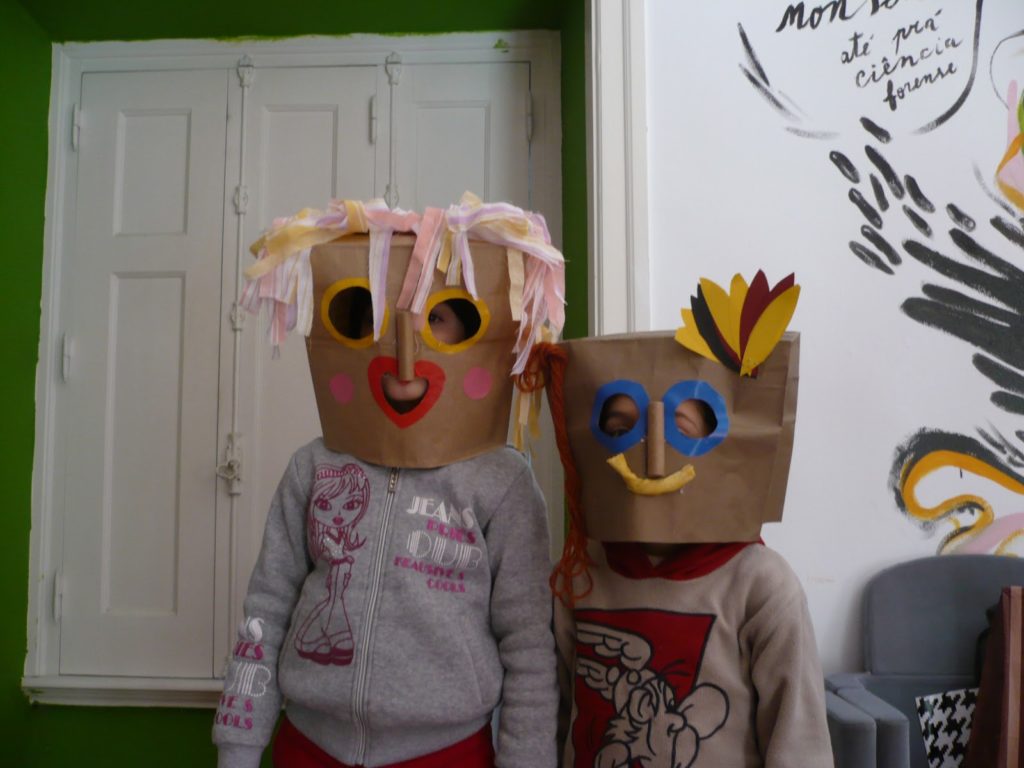
Bruno Leite
June 1 — education, one man, world children´s day

Bruno Leite
April 8 — autosuficiência, new world, off-the-grid, solutions, sustainability
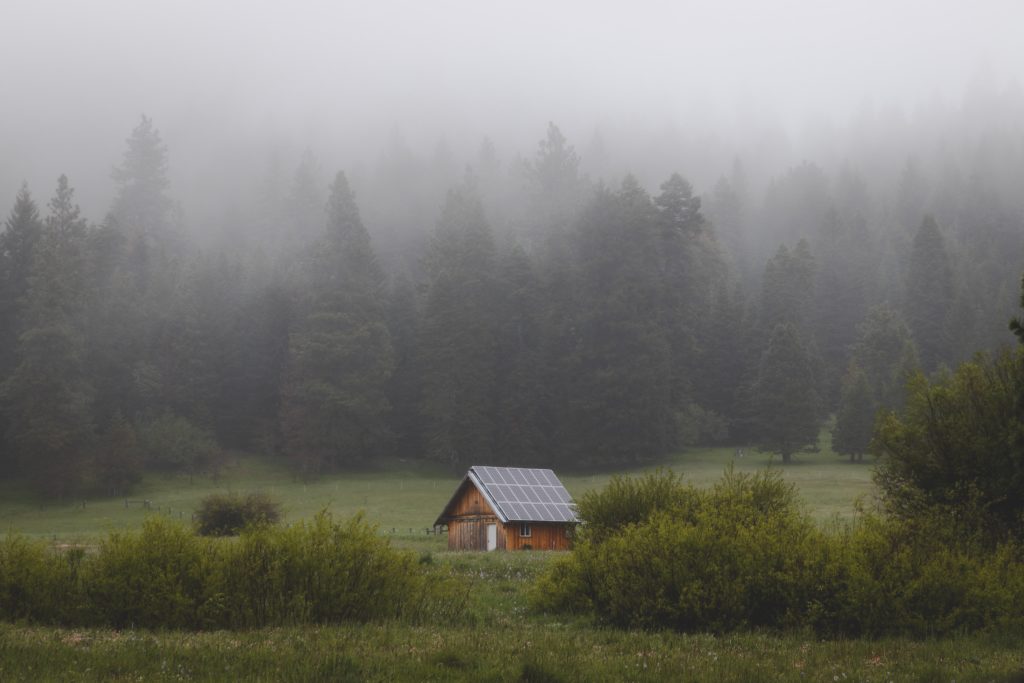
We know that it is a “group of friends” who is behind Owngrids, have any of them ever lived off-the-grid, or tried? (if you liked what you are going to read, at the end of this conversation there is a 15% discount)
António – We all still live within the network, but Fernando lived a large part of his life in Venezuela, where he has always been in contact with a reality where sometimes electricity and other essential goods are not always guaranteed. Me, not out of direct confrontation with the scarcity of certain supplies, but because of my proximity to an uncle who has always been the family’s “MacGyver”, I grew up watching several small self-sufficiency projects. The fascination came from there.
On a daily basis, we already use certain tools that allow us to achieve some autonomy. Solar Powerbanks, for example, we often use as an alternative to the power grid. Which is only possible today, due to the advances made in the battery sector, which allows us to have in one device the production, storage, and distribution of energy.
What is your personal relationship with the topic?
António – Since I was young I have been concerned with the future of society and the planet. Over the past few years, I have been close to projects all over the country that seeks to build a new life in the community, where resource management and self-sufficiency are the order of the day. I faced the difficulties of those looking, for example, to generate and consume their own electricity, produce their food within a sustainable logic, using techniques such as permaculture or hydroponic agriculture, or even reuse rainwater for practically all areas. daily uses, through rainwater collection and filtering systems.
Current access to different products is scarce and disorganized, as they are very different industrial sectors (water, food, energy, mobility, utensils, and health). There is no other website that joins, informs and sells simultaneously what is necessary to stay off-the-grid, organized by the main areas of daily life.
With Owngrids it is possible to capture rainwater through water collectors and filter it to become drinkable through water filtration devices. Generate clean energy, store it and distribute it without using the grid. Grow various vegetables, in different locations, in an intelligent and sustainable way. Move “green” and autonomously using e-bikes or electric scooters. Create necessary tools on 3D printers. Minimize health risks with emergency support products.
It is hard to believe that the launch of this project happened in the unique moment that we are experiencing. How did it happen?
The idea of offering solutions that allow people to achieve greater independence and self-sufficiency has been taking shape for some years, but it was only in the beginning of 2019 that I challenged Fernando, with whom I have worked in different marketing projects and who already has experience with e-commerce stores, and we started creating the website. There were many months of improvement and this whole disaster of the new coronavirus, accelerated the process of the official launch of the website. We noticed an increase in online demand for hygiene and health products that in many places and cases have been scarce in physical distribution. We chose to adapt and today we are able to guarantee the essential products to combat COVID-19 (gloves, N95 masks, non-contact thermometers, sterilizers …) with guaranteed shipping & delivery conditions certain countries with terms of 7 to 18 days. So we reach those who need it, with what they need, in the time they need it. At this time, the “Health” area has been in greater demand, but “Food” is also starting to grow, with more and more people interested in starting to grow their food at home. We have several solutions for different types of agriculture and realities. Raising peppers on a balcony is different than growing in a yard. There are different solutions for this, such as Vertical Gardens or Smart Grow Systems.
Have you noticed the impact this had on the launch? Was there an immediate demand for gloves, for example, something extraordinary that you were not expecting? How has membership been?
António – It is still too early to draw conclusions, but naturally there has been a greater demand for this type of product. We try to deliver the best products, at competitive prices, within affordable terms and inform the community about the care to be taken in this atypical period. We have written an article with the main measures to be taken and we have tried to warn of the importance of staying at home and protecting themselves when they have to leave. Adherence has been positive, sometimes due to the idea of self-sufficiency, sometimes due to the tools, we offer to fight the virus.
How did you find the suppliers? Online research, tips from friends, others…
António – We work with suppliers around the world. We started by defining the concept of self-sufficiency and tried to find the products that could match. Suppliers are the result of extensive research, for which we have our own method with defined metrics, to ensure the delivery, quality, and safety of all products sold.
What is the most medium to long term expectation for this project?
António – Owngrids’ goal is to become the main partner in the transition to an off-the-grid life. We seek to educate for the possibilities of existing independence and to materialize this ideal with concrete products that immediately help to start a new life.
The current pandemic has already lifted the veil over this modality, with more and more people all over the world thinking about alternatives to the established network, which is currently suffering threats that compromise its good functioning. Currently, with the spread of the pandemic, the focus is to avoid contagion, with the search for products to fight the virus, but we anticipate that with the progress of this quarantine reality, more people will feel the need to start to become more independent to ensure the continuity of goods and services that we now take for granted.
Our vision is that we are at a unique turning point in history, in which the available technology is increasingly able to free us from certain dependencies, allowing greater security and savings in the short, medium and long term. We believe in the fusion and balance between nature and technology. Off-the-grid is not synonymous with returning to the Stone Age. The important thing is to create new networks. Hence the name Owngrids.
How have you been occupying your quarantine?
António – In the countryside, in “retreat”. Each one, through his computer, has been continuing his work obligations, but the truth is that we are all confronted for the first time with the reality of the home-office and its advantages and disadvantages. I am aware of how lucky we are to be in contact with nature and that many people cannot leave its four walls in the middle of the city’s buildings. I have followed all developments with attention and concern and tried to reflect on how to continue our lives after all this. Having to “stop” allows time to think about a wider perspective on the direction we take individually and collectively.
What do you get out of this when it’s over? Positive and negative.
António – This pandemic will undoubtedly be one of the most transformational events of our generation. In addition to health-related damage, shutting down the economy obviously has serious consequences. Many companies will have to close and many people will lose their jobs. Any crisis requires an enormous effort of sacrifice and often a complete change in business models but above all in mentalities. I believe that the companies that will more easily resist, will be the ones that are able to adapt to an increasingly more digital life, where having an online store will become a must-have for any business. On the other hand, the introduction of mass teleworking by companies demystifies the real need for physical presence at fixed times. I believe that, after this trial period, if productivity continues, companies will increasingly start to adopt this modality, which will inevitably allow people to opt for lifestyles more distant from the big cities, where self-sufficiency may become less and less a dream, and another reality.
*** There is a personalized coupon for the Village People community, with a 15% discount on any product in the store. Just add the code – OWNVILLAGE to the checkout ***.
March 30 — 2Jack4You, acid, sintetizadores, talento, techno
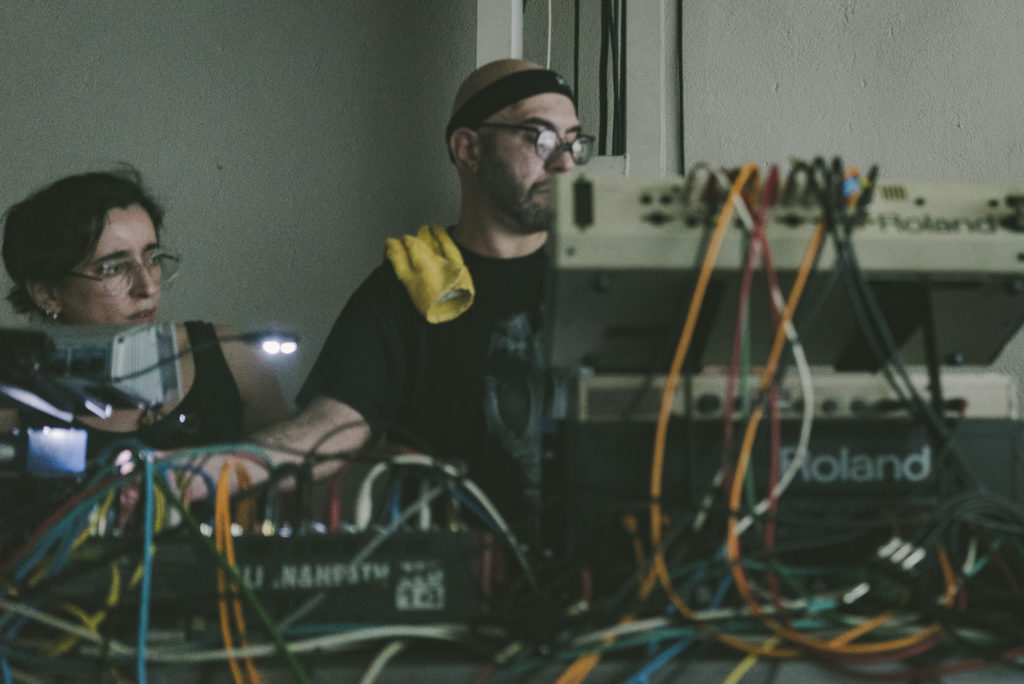
André Carrilho
March 27 — acorde maior, hip hop, Mayra, musica nova, novo talento
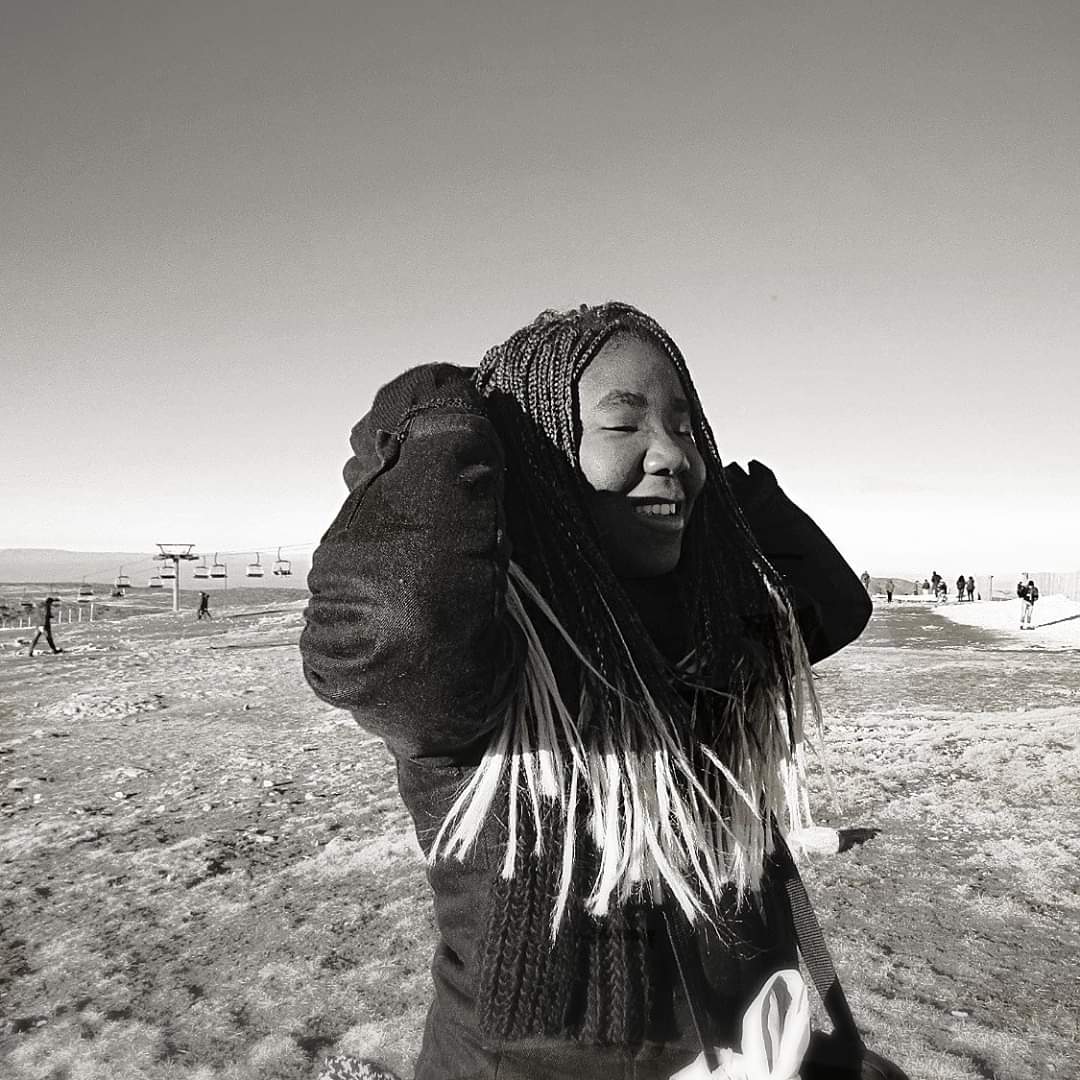
Mayraa Leonilde
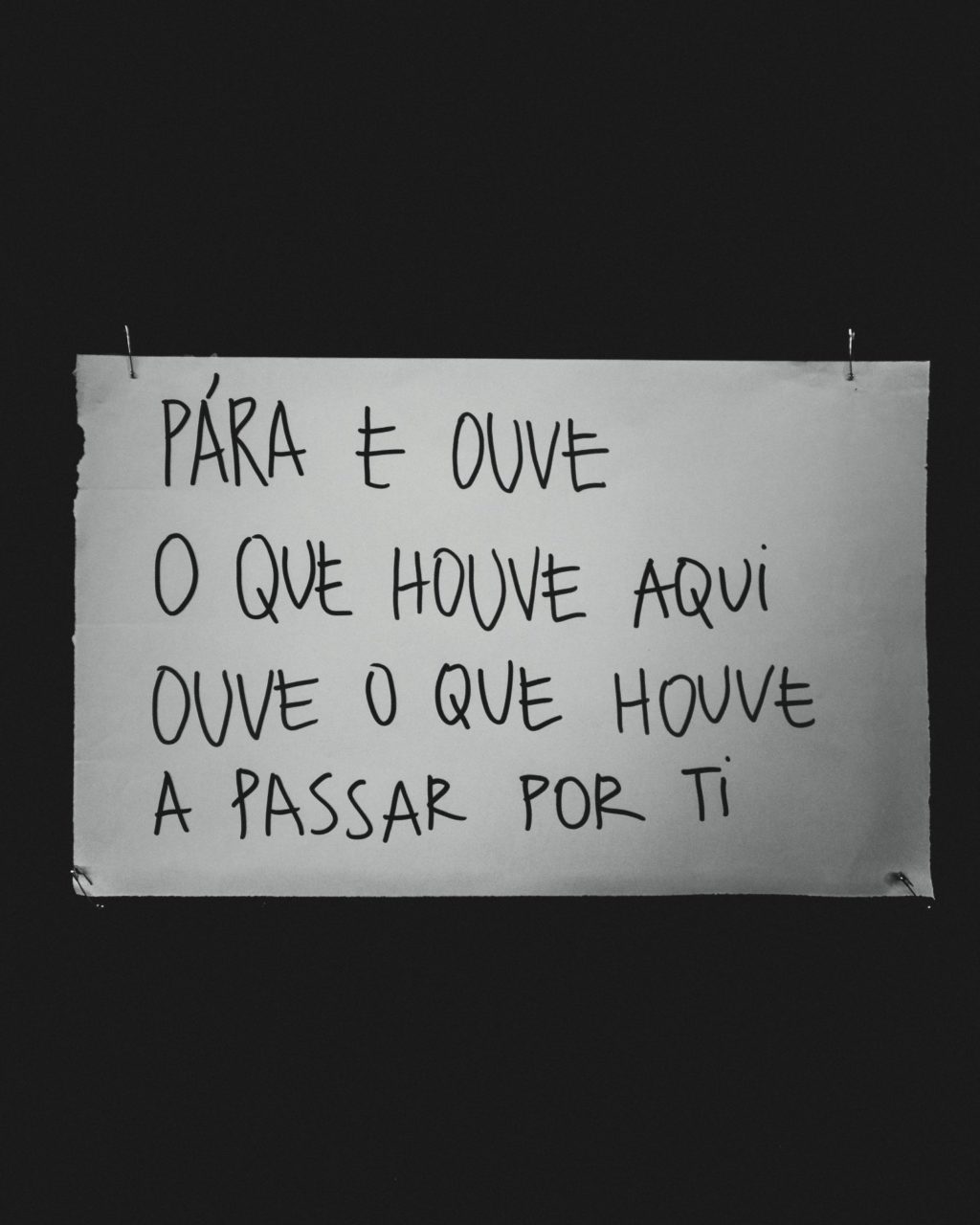
January 30 — all night set, indoor venue, party, progressive, stereo addiction, techno
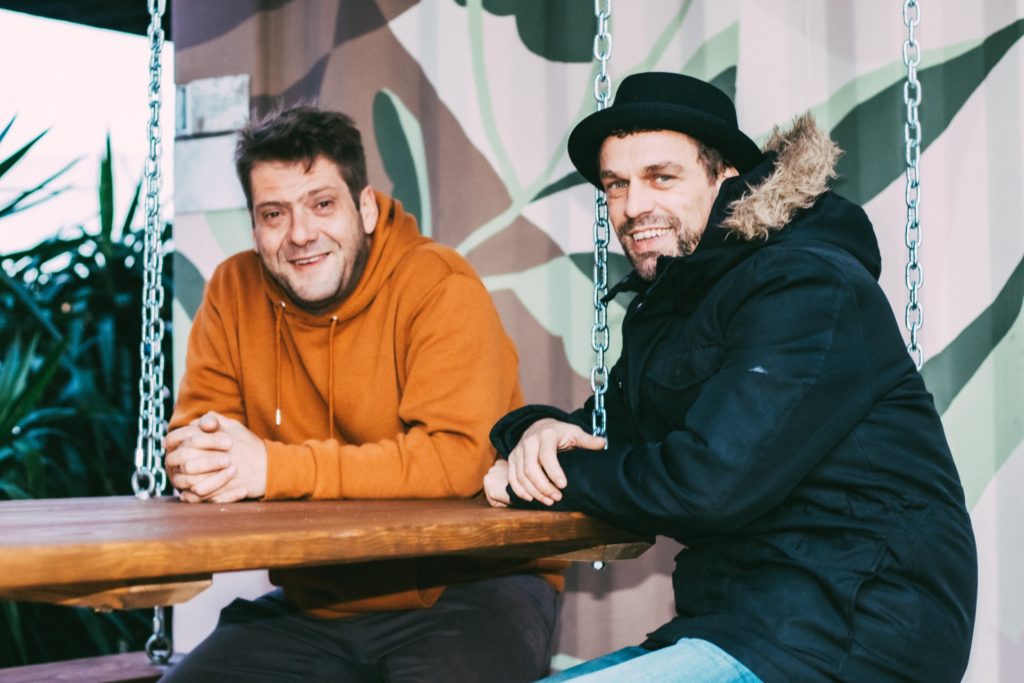
Rodrigo Perazoli
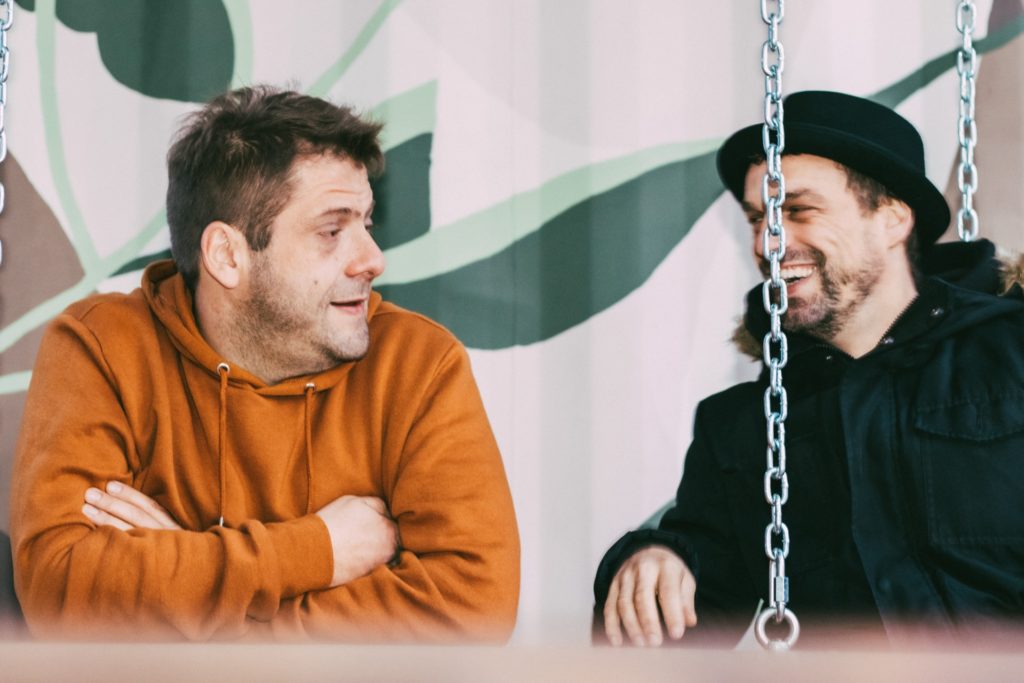
December 5 — georgia taglietti, meetsss, mentoring, sonar festival
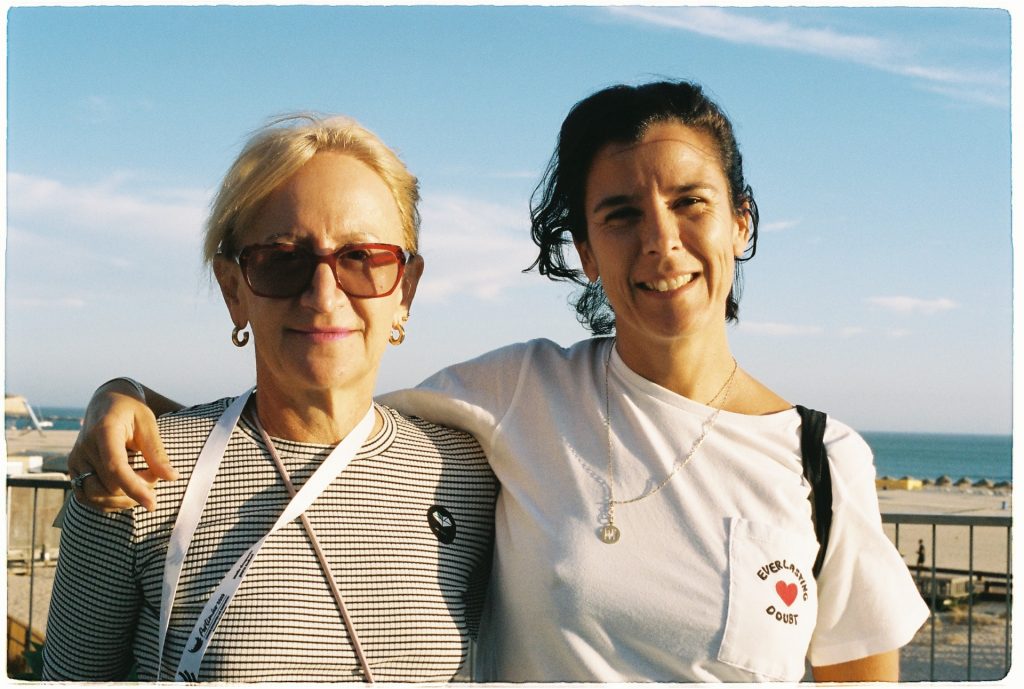
Mara Reis
Isabel – Tell me about the importance of the concept of mentorship.
Georgia – Mentoring has always had an important role in my life in a moment I was re-avaliating the way I worked in music and what I really was doing for others. I was extremely focused on me, my stress and my super work. I didn’t feel really well. It was exactly at that time that Andreea created shesaid.so. That’s why I say: timing is crucial. I was looking for a goal besides Sonar because I felt there was nowhere to grow. There’s a certain level where we are there without any big worries. I needed more. I have reached an age where I wasn’t going out or seeing people as often because I have a very calm life with my husband and then Andreea came into my life. It was in the same year I started teaching at the university, having my own network. It was easy for me because I have a good capacity of speaking in public and I like teaching. I don’t even like papers and powerpoints – I teach the way I want to because it is not the only source of money I have. After five years, mentoring is something I try to do every two months. It’s the minimum I can do to offer some knowledge. It’s so important to share and to tell you the truth, speaking in public is what I do best… I do it since I was a kid and I believe we should take advantage of our empathy and understanding skills. Many of the people who are looking for a mentor are in a personal or professional dilemma and I believe that mentoring is good for mental health. Being creative also means dropping off some weight off your shoulders and freeing you from the bad things. I think every creative person has a bright and a darker side.
Age is also important… the menopause was one of the best things that happened to me for not having the slavery of having the period. It brought me a certain stability especially because we don’t have the highs and the lows and so we realize what happens with our body and win some self-consciousness about being a woman. I am also a little nerdy as I like to keep up with the technologies and with what kids like these days. Most women at my age aren’t like this, they don’t care about stuff like this. I work for a young community and though it’s not a classic environment my team hears the music I hear and use the same social media as I do and so I feel I also receive a lot back. I am a kid to technology and I think that’s how technology should be: fun.
Isabel – And also social media.
Georgia – I love the social media. This amazing thing happened in London when Facebook spread its privacy policy which is a dystopia because we can’t think of humans as livings that don’t have a choice. You have a choice, you can say you don’t want to be on Facebook. No one is forced, you can even create your own network in some way. I hate these complaints on technology as it’s only prejudicial if you want it to be. For me it’s only making things easier and with so many friends. I wouldn’t be here without technology. Every mother that complaints about their kids being addicted to technology have spared a thought on how they can educate their kids on the use of technology? Children have their limits even with technology. (continues)
Isabel – After this meeting do you think that in the future of shesaid.so mentoring will become bigger?
Georgia – Everything will get bigger. My initial idea of this meeting was for the people who have been online to meet personally. Who are the people around us? What is shesaid.so? I think this conference made very clear what shesaid.so defends and not only mentoring. It’s the share of knowledge, the change of information sharing with nothing to hide. The music industry has always been very dull and here we see the real work being done. That’s what we do in life. We all share information, something that men usually don’t do. Therefore I don’t think it’s only about mentoring, shesaid.so has itself already a mentoring structure because it was a Google group that shared information at any level in this industry. Passively it was mentoring already but now it’s also actively. The philosophy, after five years, is integrity, coherence, solidity and a connection between people about the topics being discussed.
November 22 — conference, meetsss, portimao, shesaidso, women in the music industry

Camille Leon & Sickonce
Do you feel that this event is important?
Yes and that’s why I traveled half the world to be here. I’ve seen the power that the she said.so community has and I’ve been trying to make many efforts to join projects in which I’m involved in. But seeing them in our event in Ibiza was a small glance of what they can be and of what they believe in. It makes every sense that they have their own forum, their own debates, their own discussions and emphasize the issues that are important for them.
I consider very important that men come here, listen and feel part of it. I knew Andrea didn’t want this event to be composed with 98% women but we need to start somewhere… I really think it’s important to hear the struggles women have been having in this industry.
And do you feel you can be part of this change for this issues to be discussed?
100%! I need to use what I’ve created, which is IMS (International Music Summit), a platform that exists for people and for the music industry and I definitely wanna hear them.
No fears for the opening?
Yes. I am open to all critics… Someone said I had shares at shesaid.so and that I had some financial interest and I am really sad and angry to hear that because it shows that people question your intentions. Clearly there’s a worry that people want transparency and so we should transmit how this community exists and how it makes money. I believe it’s important to make that clear.
November 21 — free party, madame bday party, new sound system, no lineup
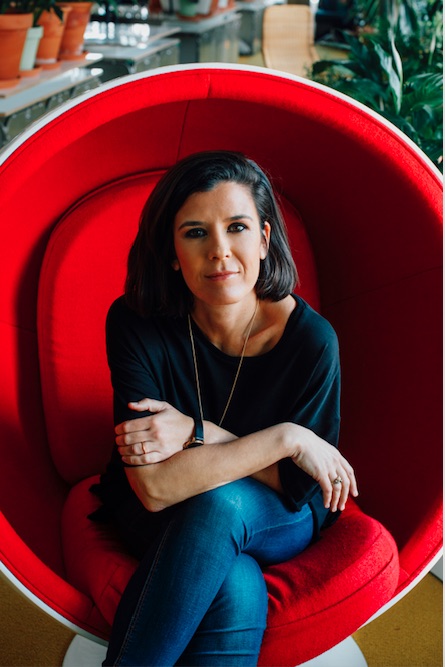
fortografia de Matilde Travassos para revista Perfect Strangers
October 18 — conferência, encontro, meetsss, Música, shesaidso

shesaid.so group by the pool by Camille Leon & Sickonce
September 4 — Alex D'Alva Teixeira, Boiler Room, Chima Hiro, Lisboa, Parris, Pedro, Sama, Still, village underground
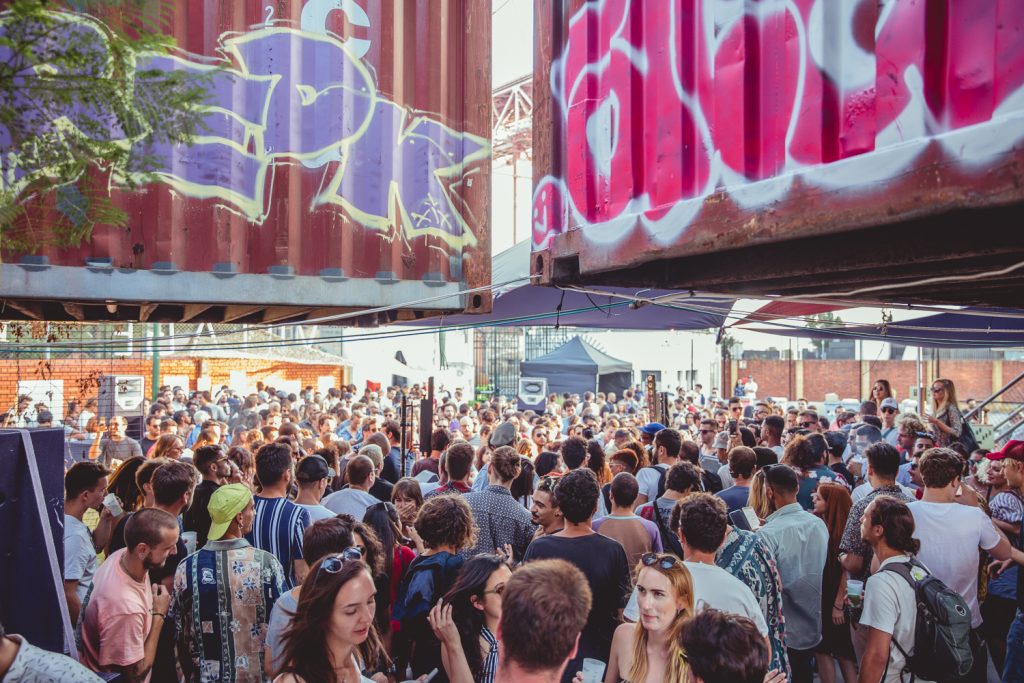
July 25 — Andrea Michaela, DJ Tabasco, Lisboa, Lisbon is the new Lisbon, matinées, Nuno Costa, Pedro Cluny, Vil, Village Happy Hours
Sonidera is one of the matinees that appeared in Lisbon in the last couple of years that have awakened the city to dance music events during the day and under the sun, which was always really close to the founder, Andrea Michaela, who brought the hedonist feeling of good outdoor life along with her African roots. I talked with her and Nuno Costa (aka Vil / Driven / DJ Tabasco) about their journeys, and I realised there are increasingly more people wanting to dance the days away in this sunny Lisbon. Jorge Naper (EN version by Soraia Martins)
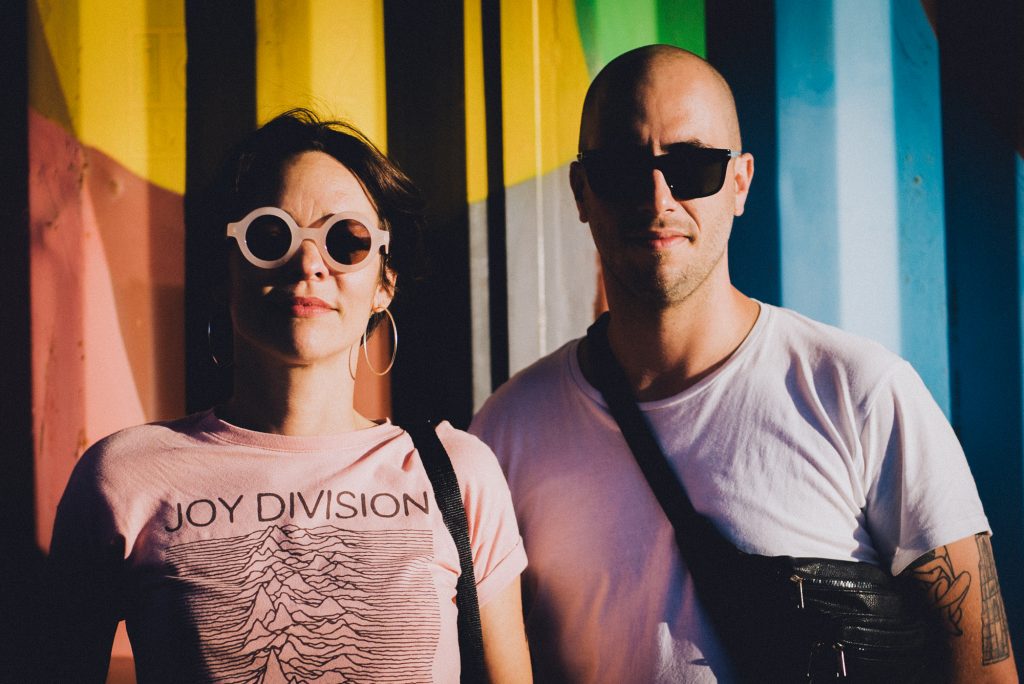
Andrea Michaela and Nuno Costa at Village Underground Lisboa by @princeofcombro
“I’m quite certain that necessity is the mother of opportunity”: this is how Andrea Michaela defines Sonidera’s beginning. “It arose from a proposition by Pedro Cluny of organising a laidback party in the afternoon with electronic music and cocktails”. Back then, Diana Botelho João joined them, “a big creative help and design-wise, too” (which is now in the hands of André Fonseca Carvalho), who just like Cluny no longer belongs to the project, but the party keeps on reinventing itself with the arrival of Nuno ‘Vil’, and it has been going on regularly for the past two years. The thing is with “so many parks, rooftops and open-air spaces in Lisbon, the opportunity to having other kind of parties came to be. We’re a kind of people who loves to eat, drink and have fun”, and that includes in the daylight, too. And if this seems obvious, the electronic music, which always hand-in-hand with the “night-time”, now seems to smile back at us with a cool pair of sunglasses.
As a matter of fact, Lisbon is the second sunniest capital of Europe, being only surpassed by Valletta, in Malta, but behind many European cities when it comes to dance parties in the afternoon. Yes, there are festivals and the recent events in big open-air spaces, like Out Jazz and Brunch Electronik, among others, “but those are more for the masses and Sonidera wants to be cosier, more intimate”, Andrea Michaela says. “The matinées at Bloop, Frenzy, or Fuse, for example, were the proof we needed to show we can go out in the afternoon and have fun”, making Sonidera the answer from the smaller, more alternative circuits of promoters to the lack of opportunities and clubs as far as electronic music is concerned: “when you can’t go out at night because everything’s closing and nothing opens, what are the alternatives?”.
And if the alternatives are creating one’s own party, that’s exactly what happened with Michaela, even more so being what she always knew how to do. “When I was in high school, I was the one throwing parties or organising trips with friends. I remember taking the then unknown Dino (D’Santiago) to perform in a friend’s bar in Vilamoura for about 30 or 40 people”. It always ran through her veins, the wanting to make things happen, with half Czech, half Angolan blood: “I have the cold, methodical, organised, orthodox side, and then the other that only wants to drink until the sun goes down and be out in the street once the sun comes out”. She grew up in Algarve, emigrated to Houston, Texas, and then Kingston upon Thames, in London — and perhaps that vision of the true Portugal, which is better grasped from afar, that made her bring that cocktail of influences to Sonidera. “I studied Health, but never worked in it. My journey has to do with office and tourism, but I’ve always enjoyed music”.
Music which led her personally and professionally towards Nuno Costa, who in addition to being DJ and producer known in the scene as Vil or Driven, is also in charge of selecting Sonidera’s artists. A curatorship that brings him “great pleasure” and gave him a musical challenge as an artist, the exploration of sounds that little had to do with his alias. That’s where DJ Tabasco, the alter-ego he’s going to use at this Village Happy Hours* and that’s only been worn with Sonidera: “I explore things I listen to more at home, like dub, ska, non-reggae Jamaican things, tropic music… These days I’m in love with salsa! Sonidera helped me grow as an artist, to open my mind to other genres, to bring on certain influences on my projects, it made them fresher”. Nuno left his comfort zone for the challenge of a party, with a career that has been made of a musical growth that went through several styles: “I grew up in Almada, but it wasn’t until I went to study at António Arroio that I messed it all up”, he says, laughing. “I was in two hardcore bands, crossover and trash, then I started listening to electronic music and going to the drum parties at Kalimodjo and found dubstep. I founded Warface with Rui Louro and João Retorta, got into B Side, did a tour with the Yellow Stripe and then created Vil. In the beginning it was more UK bass and house, and then I realised the path was through techno, about 5 or 6 years ago”.
And it was back then he met Michaela, who was on the dancing crowd side. She soon started following, in Algarve, what was left of the 90s raves in Portugal. From Kadoc to Locomia, “I attended everything; I even remember Jeff Mills for 1000 escudos! And since my mom had the club’s card, I was there all the time”. And now in Lisbon, after a decade of being out, “Manaia’s Mini-Mercado opened the doors for me, and I followed the rise of Xinobi, Moullinex, Cpt. Luvlace, Bandido$, I was even at the debut of Zombies for Money…”. It was the onset of Discotexas, with parties for a restrict group of loyal clubbers, “when you still took pictures with digital cameras. There were so many of us from Algarve that they called us ‘the Algarve earthquake’”.
And from clubber to event producer was smooth sailing for Michaela, or Micas, as she’s known in the scene. She worked with Bloop, Lisboa Electrónica, Festival Forte, Ministerium, until she created her own Sonidera, with such love for music hand-in-hand with production. “When I was a bouncer for Bloop’s 8th anniversary and Underground Resistance were performing, I asked myself what I was doing there, and everyone told me to leave and just go to the dancefloor. What I felt just filled my chest and nothing could fit anymore”. And it’s that soul inexplicably filled by music, coupled with her wanting to bring friends and smiles together, that give Micas the overwhelming strength to make it happen and fill our hearts, too. With an offer as honest as listening to music under the sun and enjoy what we have in this warm country. And if we’re talking about warmth in our chests, Lisbon is closer to the tropics with Sonidera.
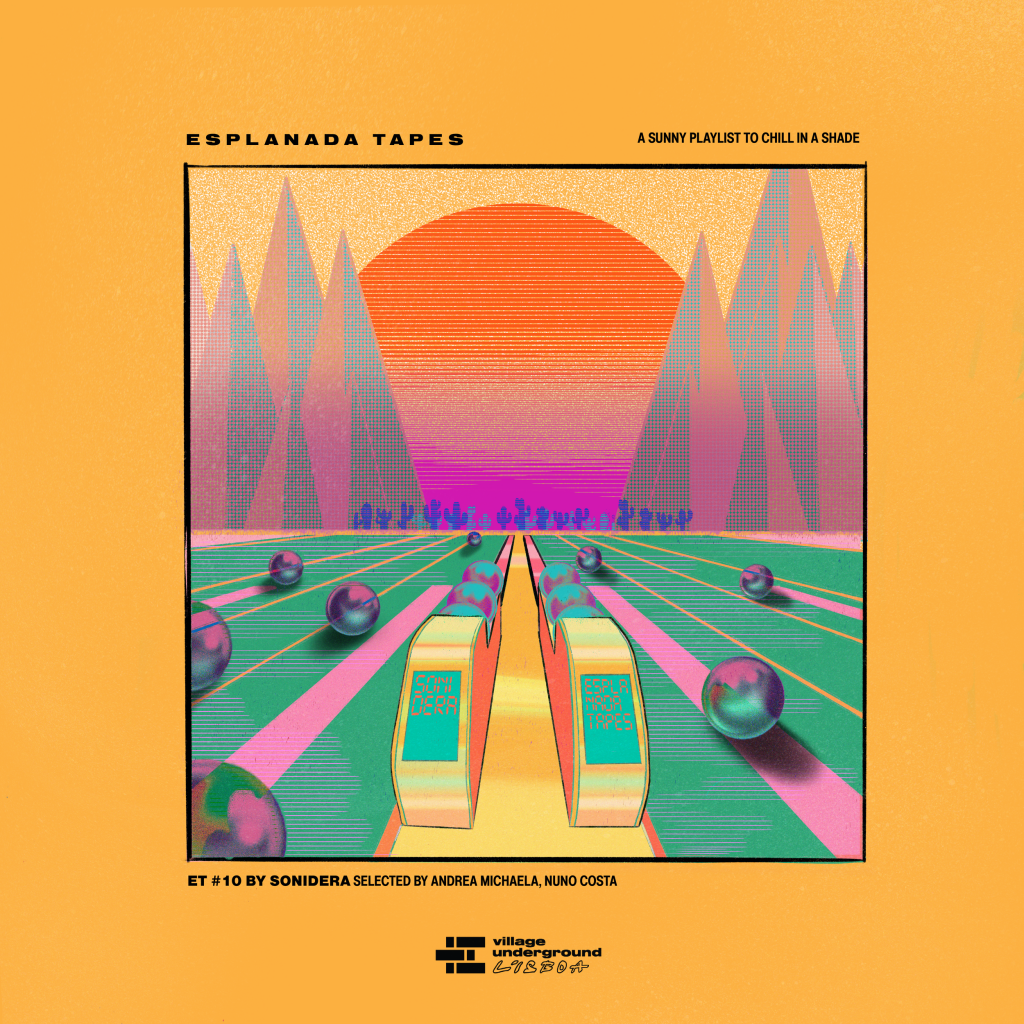
Click here to listen to Esplanada Tapes 10 by Sonidera, selected by Andrea Michaela and Nuno Costa. Artwork by Georges-André.
July 18 — BLEID, Caroline Lethô, Desterro, Gender, Intera, Lisboa, Lisbon is the new Lisbon, Lux, Mariana Duarte Silva, Music, RBMA, RUST, Sonja, Telma, Village Happy Hours, Violet, Women
Intera wrote a manifesto, as it doesn’t want to be just another label or party throwers. It doesn’t hold the usual ten intentions, but six, somewhat anticipating their non-formatting layout or normativity, be it gender, racial, social or musical — or everything that discriminates some against the others. It’s not female, it’s neutral — it stems from an idea of community and not towards a gender, whether it’s musical or sexual. But it was created by three women, Carolina/Caroline (Mimoso/Lethô), Telma (Correia) and Mariana (BLEID), in a world where men are still the dominating party. In times where women empowerment in society and music is on everyone’s mind, I chatted with Carolina and Telma, curators of the next Village Happy Hours*, and we talked about their careers and purposes, about Intera and the role of the underground scene in Lisbon as far as the proliferation of editorial projects goes. Jorge Naper (EN version by Soraia Martins)
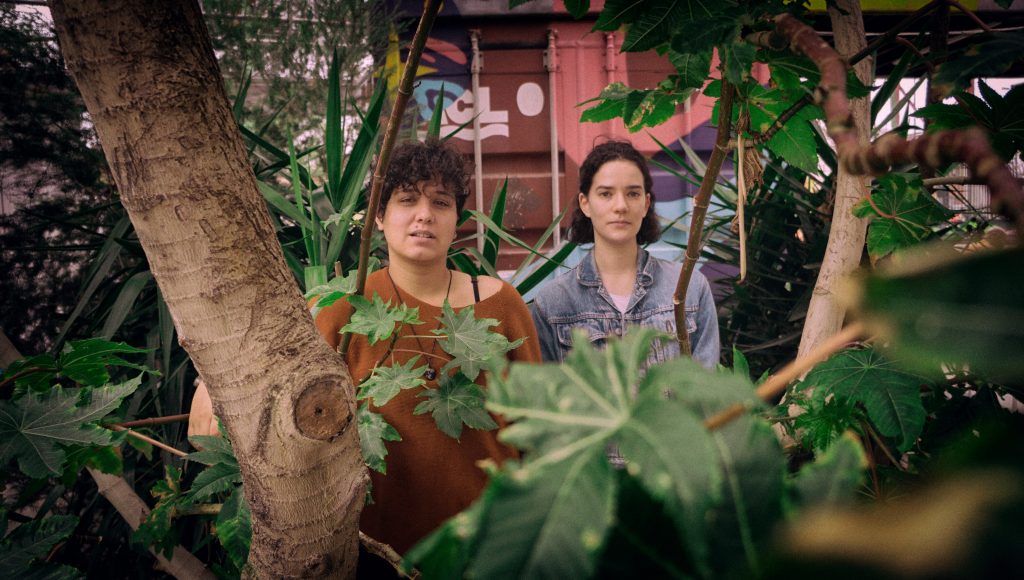
Carolina Mimoso (or Caroline Lethô) and Telma (Correia) at Village Underground Lisboa by Sbrugens
Without any trouble assuming short careers made up of chance occurrences (though meteoric in terms of projection and recognition), Carolina and Telma are the personification of humility that many tend to see fade when they get their game going. They answer with such calm and positiveness to dividing subjects, like the role of women in music or the more restrict artistic circles. And in spite of their unique, matchless personalities that spread further onto the dancefloor, I lost count of the times they completed each other’s sentences, which made me decide to quote them as a collective — in fact, as collective as Intera wants to be.
But before the dreams, or where they want to go, let’s see where they come from: Carolina grew up in Faro, Algarve, and since an early age she got mixed up in the music universe thanks to her saxophone-playing father, and later the bass and drums she learned at the conservatory. When she started going out at 16, electro, maximal and drum ‘n’ bass were playing at “every alternative music spot like Nordik”. By the time she turned 18 she was already planning parties, and just so happens that in one of those she had to replace the DJ and ended up spinning records by mere accident. But it was only when she started composing that Lethô was awakened in Carolina, when she dropped from a marketing course to embrace a musical production one at ETIC, in Lisbon. She started sharing videos playing with synths online and Diogo (Marie Dior) invited her to release something through AVNL Records. Not long after, she was playing at Desterro, and meanwhile Rádio Quântica and Labareda were born from the minds of Violet and Sonja, who gave them the chance to keep on showcasing stuff, from music production to curatorship. And DJ Caroline Lethô’s début happened — mind you — at one of the most celebrated clubs in the country: “Lux. 31 March 2019”, recalls Carol. The date is engraved in her mind, as she still keeps the abovementioned humility that makes her instantly bowed down to gratitude, even after all the artistic validations that came after. The things is, the best was yet to come, and it represented a dream coming true that was nurtured since the time she was at ETIC with Rui Miguel Abreu, her teacher. She tried to get in the Red Bull Music Academy (RBMA) for three years to no avail, until in 2018 she got selected to join some of the world’s most promising electronic music producers in Berlin, on RBMA’s 20th anniversary and last edition: “It opened a lot of doors for me, but what matters here is to be yourself. Sure, there are moments when you doubt yourself, but you’ve got to keep your own way of expressing in your head”. And after the recognition that brought her international tour dates, Carolina’s dream now stands on “living in the countryside and plan parties, raves, festivals. Not too big, but that manages to gather a community of people I believe in”.
Both see their lives connected to music and DJing, but Telma’s future “maybe leans more on doing other things within the field, be it programming, producing or writing…”. She also came to Lisbon in search of something, probably her own way and sense of community. Born in the outskirts of Leiria, she has always been interested in music, which led her to study journalism so she could write about culture, artists, concerts and festivals, ending up doing it for Ruído Sonoro and Arte Factos “about sounds that would go from rock to electronic”. From there to stepping in behind the decks was all a question of motivation and opportunities: “Sar taught me how to use the computer and I was playing at Feira das Almas, and then Underdogs invited me, too… I started getting hooked on records, so I went on a lonesome trip to the capitals of electronic music: Berlin, Amsterdam, Paris”. And chatting the nights away with her friends Nélio Pedrosa and Miguel Ramos at the new Desterro, they came up with RUST, a series of events that made her what she is in Lisbon’s underground scene. From then on, she never left the DJ booth — a career she tries to balance with the managing work she does for Peggy Gou (yes, that one) and at a Portuguese tile store —, recalling her début on Lux’s lower floor at a Superb party as one of the highest points of her career, with a set that really deserved the applauses of the ones present.
And if, from Desterro to Lux and RBMA to Quântica, opportunities came on knocking for Carolina and Telma, they too wanted to create a platform to motivate other aspiring artists: “Intera emerged from the frustration of seeing the same names and the same things happening all the time, so we wanted to create space for new things. A network of communication and mutual help between us and the people that are starting their projects. A community”. And they feel that, in spite of the proliferation of labels, producers and promoters, “the many collectives are not crossing paths or collaborating”. But these DIY organisations, motivated by artistic creation, have spawned bolder movements and curatorship, which allow for minorities — from LGBTQI+ communities to women — to express themselves in a way that clubs with commercial purposes with unlikely promote or allow.
Sitting around a table outside at Village, it would be hard to let the subject of the woman’s role in music or DJing: the thing is, in that same place, in 2016, OFF September happened, an event with an entirely female line-up, programmed and produced by our own Mariana Duarte Silva (VULX co-founder), Sónia Câmara (Sonja) and Inês Coutinho (Violet). And that also stirs up into conversation the question if that concern in programming with more balanced rations between genders make sense: “There’s no harm in having the party calling artists that are men, but if there’s a lack of research by programmers for other things, the majority of people will always choose what they already know”. And the world of arts and music holds an historic role as far as more equalitarian ideas are concerned.
But Caroline Lethô and Telma don’t seem to worry much with the moral(ist) aspect of it, especially because that’s not what they represent. “We are biologically different, but we’re all the same”, and the artistic and musical sensibilities have nothing to do with gender. Being a woman doesn’t define them as DJs or the way they are in music. “Yes, women are very compassionate. It’s a strong energy, as we’re still a minority around here. Magical things happen when women support each other”. Telma and Caroline will stay as they always were — whether it’s at an illegal rave or a sunset party, producing or playing, in the office or on the dancefloor —, not as women-artists but as artists, doing what they love and not what society asked them to be, through a genderless art.
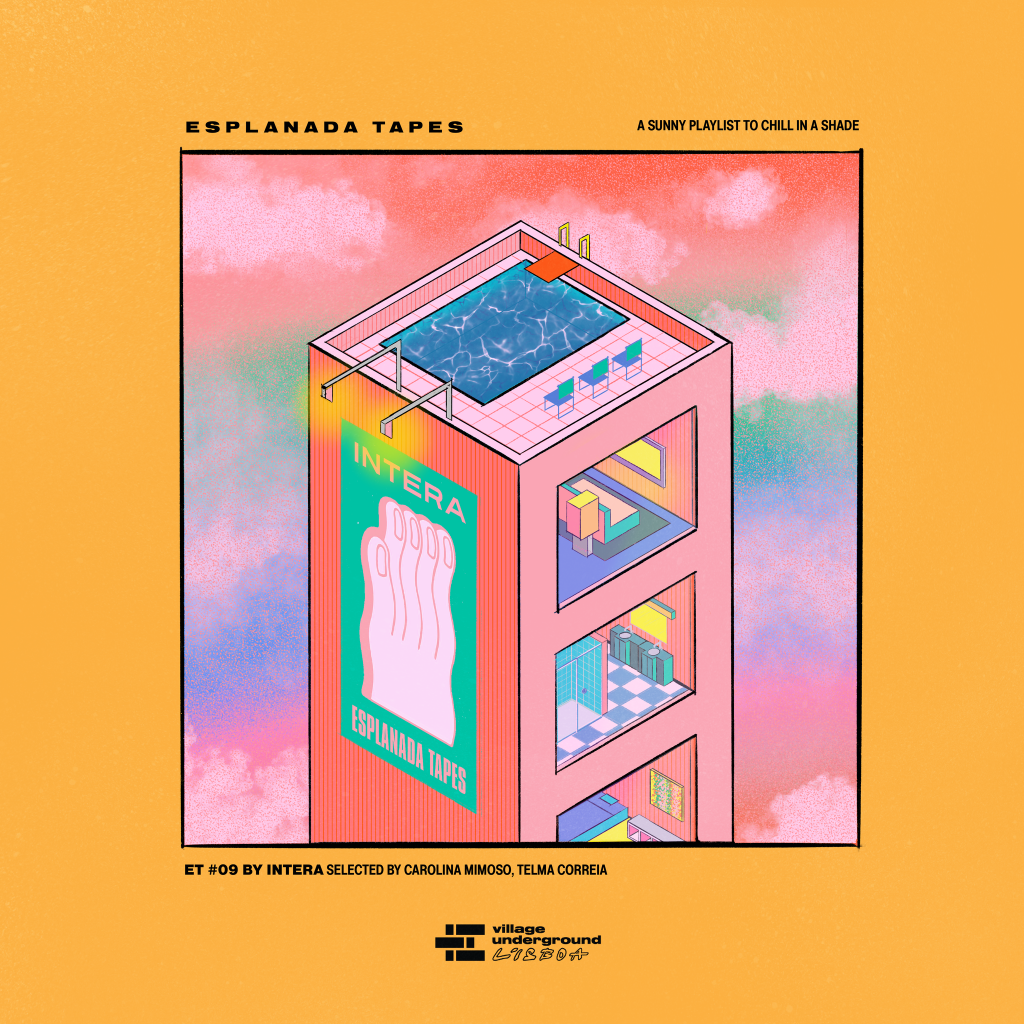
Click here to listen to the Esplanada Tapes 09 by Intera, selected by Carolina Mimoso and Telma Correia. Artwork by Georges-André.
July 11 — Dupplo, Lisboa, Lisbon is the new Lisbon, Music, OITO//OITO, Raves, Señor Pelota, Village Happy Hours
The “Summer of Love” was a counterculture phenomenon that occurred in 1967 mainly in New York City and San Francisco, where a large artistic and hippie community got together to celebrate love, rejecting all consumerist values, governmental policies and the Vietnam War. Twenty years later, in 1987, DJs from the UK were bringing acid house and the so-called love drugs from Ibiza, sparking empathy and euphoria on the dancefloors, and giving rise to the rave culture that spread electronic music and the club scene in the 90s. In 1988 and 89, clubs like Future, Haçienda, Shoom and Trip were disseminating that culture all over the UK, which resulted in the “Second Summer of Love”, a movement that outspread to the rest of Europe. Thirty years on, in 2018/2019, OITO//OITO pops up in Lisbon, a label and promoter that pays tribute to that love for music, communion, diversity and inclusion. I spoke with André Pelota and Pedro Pinto about what OITO//OITO is bringing in differently and realized that sometimes you really have to go back to the essence of things to understand what got lost in the way. Jorge Naper (EN version by Soraia Martins)
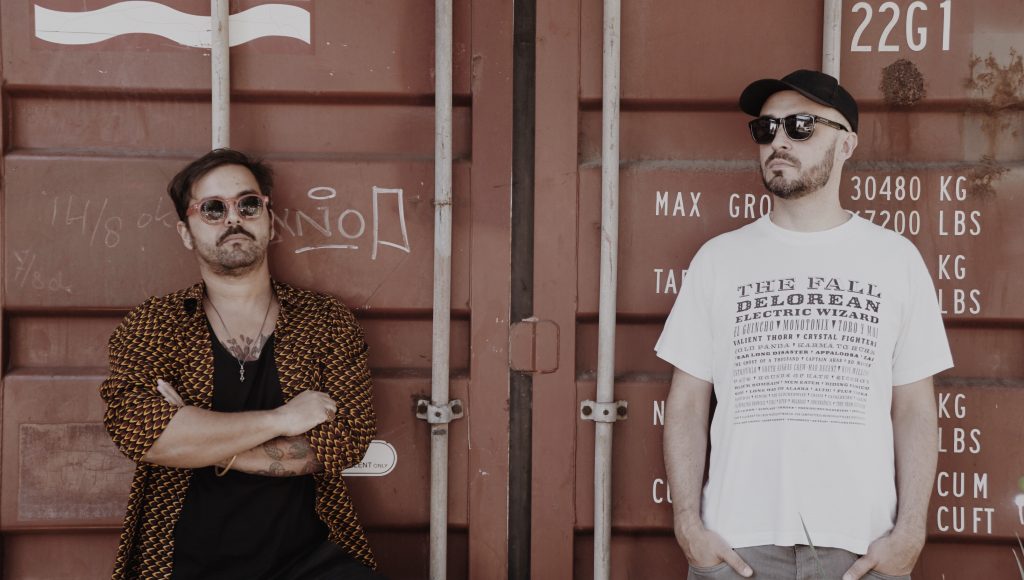
OITO//OITO with André Soares (Señor Pelota) and Pedro Pinto (Dupplo) by Sbrugens
OITO//OITO is the new music label and event promoter by André “Pelota” Soares (Señor Pelota) and Pedro Pinto (Dupplo), united by the love of music, whose careers have already been through many mutual touchpoints in terms of exploration. Their names are recognizable by everyone going out in Portugal, from Porto to Lisbon, from Paredes de Coura to Zambujeira do Mar, and from Viana do Castelo to Baleal.
Pedro Pinto started to play hip-hop in Porto in the beginning of this century, but then the electroclash movement and Club Kitten parties, that mixed electro, rock and house, motivated him to create the Twin Turbo project with his twin Nuno, which resulted in regular parties at Passos Manuel and Plano B that shaped Porto’s nightlife. Since then, Pedro went through many styles: either with MegaBass (with his brother and Sergio Gomes from Breaks Lda.), where he explored UK garage, bassline, dub and dubstep, in residencies at Armazém do Chá and Paredes de Coura festival programming; Voxels (with Pedro Chamorra), an house and french touch project where he produced many EPs, remixes and an album for Optimus Discos and Enchufada; or Dupplo, the name he uses to release countless tracks and for the residencies at Lounge and Café Au Lait. Pedro is one of those DJs that has already learned from many schools, therefore having a remarkable knowledge of the dancefloor, which made him belong to many movements without ever being definitively bound to one.
And if Pedro only came to Lisbon after a decade behind the decks, Pelota is a señor, a recognised cultural agent in the capital. André grew up in Benfica, having been driven to electronic music by his brother’s cassettes and by neighbours Nelson Flip and Nuno Flick, after years “fancying guitars”. But raves in Serra de Sintra, Figueira da Foz, or nights at Alcântara-Mar, Kremlin or Frágil, made him “stop going to concerts or taking girlfriends to the movies to buy records at Question of Time from Alkalino, at Bimotor of Luís Leite, or World Music of brothers XL and WLA Garcia”, being that now he owns a vast and enviable collection. And like that he got to know people whom he identified himself with, until he got a gig at Três Pastorinhos, followed by Captain Kirk, in times that being DJ was only within reach of a few. But since then, he never stopped being present on Portugal’s and Lisbon’s nightlife: being for the 10 years of monthly Glam Slam Dance parties, a project of genre fusion with Mário Valente; Intelectronik with Pan Sorbe, where he explored electro, house, techno, acid and disco; or Mutante, a radio show for Antena 3 Dance that instigated more than a hundred parties, mainly at Lounge, his “second home”. And besides that, he passed through all summer festivals, was involved with Freima and Frenzy, did music curation in bars like Velvet, Bar do Bruno (Baleal), or Clube da Praia (Zambujeira do Mar). Curriculum is something far from lacking to a guy that believes to be a music devourer and promoter, which made him a prominent figure of this century’s clubbing scene in Portugal.
And even if eclectic DJing journeys have been experienced by both, Dupplo is more connected to music production and Pelota focuses on programming and promoting, being that the initial idea of this label/promoter brings these two sides together: “the fact that we’re not associated to a collective was the starting point to join forces and created something shared by us. The label was secondary, but then it ended up being the primary thing”, Pedro says. And thus OITO//OITO also ends up following Dupplo’s prolific career as a producer, another platform for the “enormous amount of music yet to be released”, with the “idea of releasing a couple of edits of less obvious music, Portuguese, between the 70s and the 90s, 8-inch records with 88 editions”. As for Pelota, “these days, to release an edit is discovering a hidden treasure, a B-side, rarities we can show to our audience”, though the “label is part of the project, a free-speech music platform”, it’s not just about releasing records, but also promoting their own events, a joining of forces of sorts by two renowned DJs in unprejudiced parties.
But what to do with so much curriculum, if this is a volatile field where clubbers change movements, clubs and artists from one season to another? Their answer is the concept behind the summer of 88, to which they call “timeless movement”. “We were lacking a free space to sway between music styles. To go back to the roots of the club culture, knowing that it started without barriers, and with the conviction that it is possible to embrace genres without going through a pure revivalism, to make people dance with music we like, from different times and styles”, André says, to which Pedro adds: “in Lisbon’s party scene, I think everything is a bit segmented. Above all, we’re free spirits, DIY, where we can play music from 1988, but also 2018 or even 2028. We’re not revivalists — though with Village Happy Hours* we’ll be doing so, but only to explain where the 88 of OITO//OITO comes from”.
And while we chatted about the particularity of a greater eclecticism in Lisbon compared to other cities, a transversal trait spotted on by all the interviewees who are part of this series “Lisbon Is The New Lisbon”, many of whom are agitators as well, ended up confessing they go out more when they play. Those who dwell on alternative nightlife venues know that it’s usual to see Pinto or Pelota soaking up from other parties: “We can go either to Surra or Mina. I like music and I’ve got to know what’s going on in my city. If I don’t go to Lux, or Incógnito to get the feel of how Shcuro’s or Marco’s (Photonz) are, or the East Side Radio parties across town, if I ignore what’s happening, I don’t know what I can do differently”. In that sense, Dupplo and Señor Pelota will become the most well-informed DJs in Lisbon about what’s going on, genuine clubbers on one day and DJs on the next, in a moment of proliferation of promoters, producers and labels that are enrichening the city, but segregating the crowd into styles or tribes.
Those tribes are not for Pedro: “there are parties that call themselves inclusive, but if I’m not on this or that tribe, I don’t feel that. And we don’t care there are hipsters, preppies or from the hood, etc. Our motivation is more inclusive”. And, as Pelota says, “that’s how back to basics works for us, like it used to be with the first house parties, where one would mix jungle, techno or dub, and that’s what motivates us to be free and not upholding a barrier, with no expectations or the pretentiousness of teaching, but rather to celebrate music for what it is, music”.
This way, OITO//OITO wants to position itself as a symbol of something not restrained by styles, genders or tribes, focusing on music diversity and building a oneiric space inspired by raves, and not just about being just like Haçienda or the smiley faces of acid, but all for the smiles of everyone who love to dance uninhibitedly, next to people who are not exactly like them. It’s made for everyone who go for the sole reason of the music and not the hype, for everyone who are inclusive because they include, and not because they close up in a circle. These can count on two DJs that grew up with everything that came after the “Summer of Love”, and who want to spread it again, with no prejudice, on the dancefloor. And who will know what to do as no other — after all, they’ve always been there, dancing with everyone, with all of us.
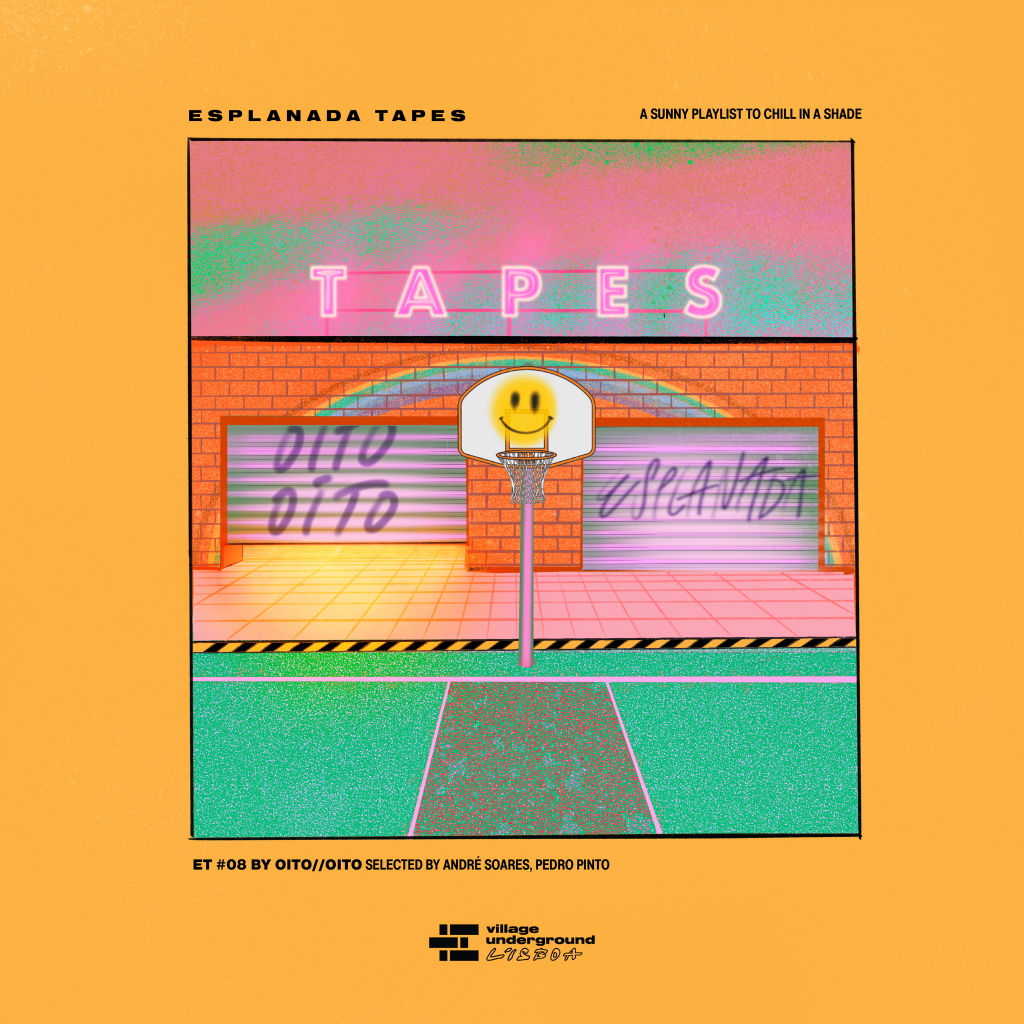
Click here to listen to the Esplanada Tapes 08 by OITO//OITO, selected by André Pelota and Pedro Pinto. Artwork by Georges-André.
July 4 — AVNL, Conan Osiris, Diogo Correia, DJ Raúl, Fátima Dinis, Germes Gang, Lisboa, Lisbon is the new Lisbon, Manuel Robim, Music, Stolen Books, Tiago Rodrigues, Village Happy Hours, Zé Rito
AVNL Records is one of the most prolific Portuguese labels with nearly one hundred releases during their 10 years of existence, though the label itself is the only thing these seem to have in common. It appears it draws inspiration from an assortment of references lost and found on the Internet, which style is yet to be defined, be it musically or visually — and as exciting as that thought. From it we got the first forays of artists who would later become well-known, such as Conan Osiris, Caroline Lethô, José Acid, Mind Safari, Ghost Wavvves, APOCA-LIPS, MMMOOONNNOOO, among many others. I spoke with Manuel Robim (a.k.a. DJ Raúl) and Zé Rito (or Fátima Dinis) about what we can expect from their 10-year party at Village Happy Hours — and neither me nor them knows exactly what’s going to happen. Jorge Naper (EN version Soraia Martins)

AVNL is the abbreviated form of Avenal, an area in Caldas da Rainha where Manuel Robim, Diogo Correia and Tiago Rodrigues met when they were studying at ESAD around 2009, on a project that came about from car ride conversations through mysterious roads between Óbidos and Caldas listening to contemporary music on Antena 2. Contemporary music is perhaps a vague definition, though possible, so we can gather Old Manual (Manuel), Marie Dior (Diogo), RAP/RAP/RAP (Tiago) in just one word, together with all the other alter egos they’ve used or the projects they invited to produce. To Manuel, AVNL “is a collection of songs we wanted to show people. First came Basecamp, almost like a private collection, and then we decided to add things from other people, without ever defining it as a label. We weren’t tied up by genre: we released what we liked, or thought was unexpected”.
In fact, that seeming nonchalance by coherence gather so much interest that one of the most celebrated international music magazines, Fader, came to Portugal to do a story on AVNL and Golden Mist: “Portugal’s new music underground is an almost accidental mix of global forces and local connections. Although might be a series of individuals connected through convenience or coincidence, the impact they have had on each other — achieving that special mixture of darkness, kitsch, gravity, surrealism and technology — is nothing less than something singular, something to be nurtured”.
Vítor Belanciano also tried to define it on one of his features for Público: “they all make stimulating, unpredictable, ill-defined music. Yes, the common electronic element is there and the inhalation of influences from the Internet chaos (from videogames to the intricate world of communication), but not much more. One might say if there’s something pulling them together is that neither of them carries out established languages, as if their sustenance were shards of techno, hip hop or ambient”.
But why should we define something when AVNL stems from the Internet, which clumps everything together onto itself, and where everything can be recovered and remixed? AVNL may be a compendium of sounds, but also aesthetics, where the Germes Gang collective, which Tiago’s a part of, has great influence. Some kind of aesthetic movement of post-Internet art, or “Internet aware”, which reflects its effect on society and culture, and where the means of communication of the content, or the issues it raises, can be as relevant as it is.
And if Manuel says he was a “very confused teenager” who only “played ball and PlayStation”, it is also true that that may have been more valuable later, with a bigger musical conscience, but also during that age where complexes “already hit the curb”, as Zé Rito says: “I grew up with black music and spent a stage in my life when I only listened to ambient and noise. Now I’m into things like EDM, for example, which to me were despicable when they were happening, but that now seem more salvageable. I feel freer in the sense that I can appreciate things that are absolutely trivial, not only in music, but also in people outside the art circuits I was more used to”.
But who’s Fátima Dinis (or Zé Rito)? He/she says that is both and many others, where Fátima Dinis is his parents’ first names put together, which he uses when directing and editing in cinema, advertising and music videos. “Then I started using it in everything, because sometimes I’m faced with gender and sexuality issues, and even though I’m kind of clueless about what’s happening with non-binary genders, I feel like a hybrid and I love playing with that”. Whether in life or in music, Zé or Fátima (or DJ Snaita, as he called himself when he played music “balancing between good taste and trash” at Bacalhoeiro or Casa Independente) is looking for the unpredicted: I want to mix things that are unconventional. It’s not just being the exception to the rule, as I love what’s playing in Lisbon’s nightlife, but sometimes I’m in Lux and I think that what would be great at that moment would be some Rammstein. And I’d love for that to happen”.
And what brings Fátima Dinis and DJ Raúl together is that outward schizophrenia leaning on being both worshippers of new sounds or aesthetic movements and recyclers of things that were rejected by the so-called alternative circuits: “It makes me sad when I see younger generations getting into a movement and not having that kind of energy typical of kids wanting to tear something apart”. Something that Manuel reasserts, as he “likes to see the reaction in people when something that wasn’t supposed to happen, happens. And I see that attitude as being punk”.
But, after all, what can we expect from AVNL’s 10 years at Village Happy Hours? In addition to an exhibition of books from Germes Gang (by Tiago Rodrigues, Ricardo Passaporte and Eduardo Antunes) and a possible auction of art pieces from an exhibition they did at Stolen Books, no one knows. During the interview, they shot a “tell us what you think about this: everyone hour, we play a horn and get a bag or a jug of wine and pour it to anyone who wants it, communally, until it’s finished”.
The only thing we do know is that this will be the party of a label that took up the Internet as means and message, with releases that go hand in hand with its visual lines, with graphic aesthetics that are as valuable as their sound compositions, with releases that could be memes, or memes that could be songs. Tiny ephemeral movements ready to be scavenged by whoever feels like creating a new one. The same Internet where Zé Rito spent his days and what allowed him to come across AVNL: “I found a RAP/RAP/RAP video with about 100 views, and I never heard anything like it. I spent a year devouring Tiago’s music without knowing he was Portuguese. I thought it was very ahead of its time and I’ve only seen something similar years later, when vaporwave appeared”. And from “groupie”, as he calls himself, he became an active member of a community sharing common interests, organizing private parties at his home with the guys from AVNL, Cafetra, Golden Mist, Monster Jinx, among others, ending up endorsing Conan Osiris’ first gig on an AVNL afternoon quite identical to what’s about to go down at Village Underground: that is, among friends and “where artists merge with the crowd”.
And that’s exactly how — among friends/artist-friends — that AVNL’s 10 years will be celebrated, with a party as unpredictable as the path the label and its artists have outlined. The only thing they told us is that those friends are going to be there, and they could damn well get up to booth at any given moment, and that there’s well-kept surprises. The unexpected. And if one could possible talk about AVNL without mentioning the Conan Osiris phenomenon, he’s definitely a good example of “I told you so” or the Pessoa-esque, roughly-translated cliché of “first it amazes you, then it gets into your veins”. Conan has got all the world’s dreams (or songs) inside him, too, artistic restlessness and motivations that come from many places — even the less obvious — and that have built a forefront made up of as much alternative culture as pop, ending up creating a hybrid, something new. “Something” unexpected, chaotic, eclectic, straightforward, without purism or shame, which, or so they tell me, more than the end of an era may well be the beginning of another. Like a portuguese popular artist says: “After all, there was another”. AVNL it’s something else, and even though I don’t know what’s going to happen, I would always go.
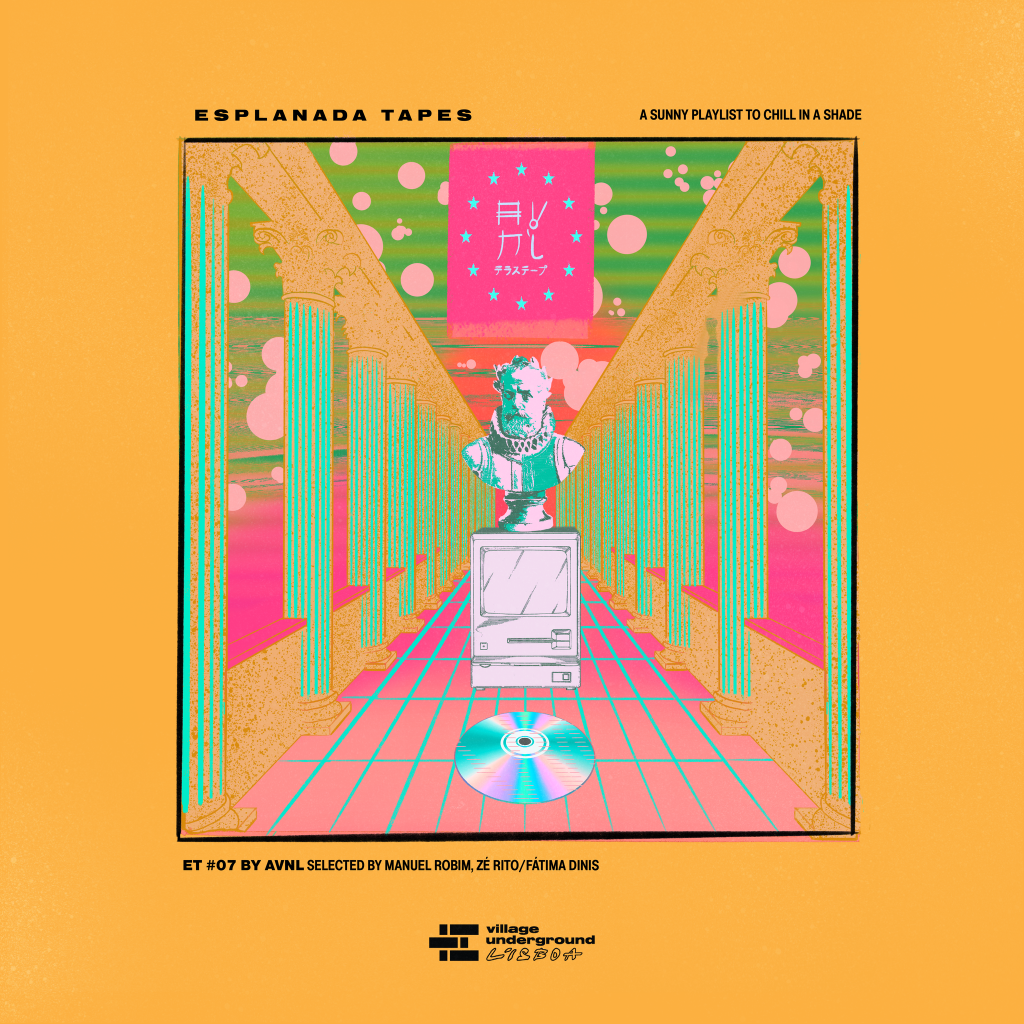
Click here to listen to the Esplanada Tapes 07 by AVNL, selected by Manuel Robim and Zé Rito. Artwork by Georges-André.
June 28 — Afonso Gomes da Silva, Anjos70, cultural agitators, Joaquim Quadros, Lisboa, Lisbon is the new Lisbon, Music, Village Happy Hours, village underground
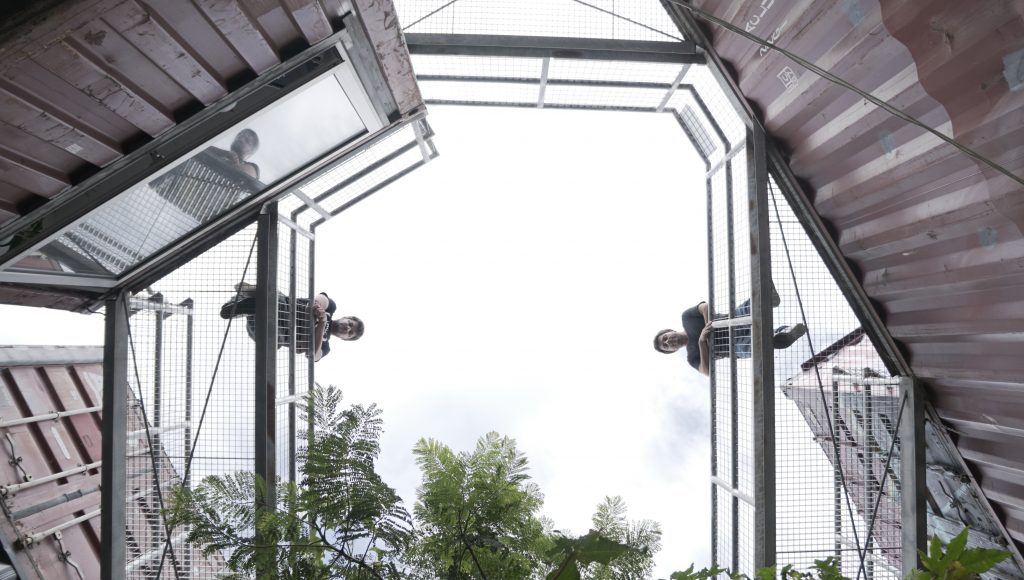
Joaquim Quadros e Afonso Gomes da Silva by Sbrugens
Everyone who sees Afonso play, free, light and unrestricted, can’t quite grasp him wearing his suit and tie behind a desk working as a lawyer from 9 to 5, but O/B holds the paradigm of that party we go to unwind from the daily monotony: “I work a lot inside an office, but I get home, put a record on and cook — and that gives me utter pleasure. To spin records is to put all those pleasurable moments together and share them with others”. Since he was a kid, he’s been familiar with his father’s 60s and 70s psychedelic rock record collection, and Afonso was already playing in college and going through a range of different range of genres, from rock to post punk, from French touch to house and 90s garage, making his current way into “more organic” roads. He comes across Joaquim precisely on those roads, in a party at Anjos70 where the idea for Ouro Bravo first comes to be, from name to concept that had to be “Portuguese, rare, wild, raw, not as polish, uncompromised, simple”. And the value of that gold, what they emphasize more about O/B, is the energy people give back to who shows them those gems — something that’s part of Joaquim’s life.
Joaquim Quadros became well-known to the public when he became a radio host for Vodafone.fm, a breath of fresh air in the Portuguese radio scene with more alternative sounds. When he started, he was only 21, so he spent a decade following music up closely, something he always wanted to do since early: “Music has always been present in my life thanks to my mother, who’d take me to live performances, mainly Fado. Later I got madly hooked on skate culture, and I remember recording film scores and listening to them with the sound of the skates behind. Then I began realizing there was a bond between skate and the music, rock, hip hop, punk, I listening to. I studied journalism because I wanted to research and promote music, and I knew that’s where I had to be”, which was confirmed by his venture into the newspaper ‘Milhões de Notas’ for the Milhões de Festa festival, and Ginga Beat, which he does with Red Bull Music Academy.
With Puro Fun, Joaquim was already fond of that idea of spending matinées listening to music with your friends, but with bands instead. The switch to DJing came not only from the desire to promote music, but also as an option semi imposed by the markets: “Puro Fun was an awful headache… Bands have three distinct circuits: festivals, independent promotors and concert halls. Festivals are more profitable and the one leaving with nothing is the promotor, because he can’t pay the artists as much as the festivals. There’s no competition there, and at the same time the concert hall has to profit from this at all times. Because festivals hold the economic power of the brands associated with them, they’ve inflated the price of bands that don’t even have a record out yet but has been deemed popular and hyped by the Internet. It’s a legitimate cause, but it cuts off independent promotors”. And as a band promotor (or artists like Luís Severo), he says “it’s easier to make someone pay 10€ for a DJ than 6€ for a band. And the band’s more expensive. It just wasn’t viable”.
And O/B’s idea is to book DJs that bring along some of those artists as well, who’re willing to show us new things from cultures they come in contact with. Like Tomás Station, for example, a Colombian-born living in Brooklyn, who’ll come to Village Happy Hours curated by O/B, “because he’s a collector of thousands of influences, from South America’s Latin music to the more Anglo-Saxon sounds”. They want to entice “music collectors who are more selectors than club DJs per se, who share more organic sounds, less obvious, less heard, different, non-committal sounds from clubs, away from the darkness of the night”. Joaquim believes the “idea of exploring the afternoon it’s because it’s more representative of Lisbon. The light… Lisbon’s prettier during the day. I don’t think it’s a city that should be lived at night as it is now”. Something Afonso agrees with, but hits back: “it’s culturally common to dance at night until the sun goes up, but habits are changing”.
O/B’s genesis lies in the day: he started precisely during a matinée at Anjos70 following an invitation by Afonso himself, Marie Lopes and Catarina Querido, and it was thought-out for that space, becoming the starting point for this freedom of being able to test what it was later reproduced through those unexplored gold mines, like Terraço do Capitólio, Hub Creativo do Beato, Palácio Sinel de Cordes, and other warehouses in Beato and Marvila, and now Village Underground: “we’ve known Mariana and Gustavo for many years and we know it’s not easy to drag people here, but we’re very thankful of this makeover, a cultural 2.0 of what’s been happening so far and which we want to be part of”. Perhaps because of those specific traits, O/B has been growing as well thanks to immigrants and expats living or passing through Lisbon, who love to find out about new spots, though “Anjos70 was always our home and the defining stamp of our identity. Anjos have a particular audience, pretty different and open. They reflect Lisbon and its multiculturality.
O/B’s genesis lies in the day: it started precisely during a matinée at Anjos70 following an invitation by Afonso himself, Marie Lopes and Catarina Querido, and it was thought-out for that space, becoming the starting point for this freedom of being able to test what it was later reproduced through those unexplored gold mines, like Terraço do Capitólio, Hub Creativo do Beato, Palácio Sinel de Cordes, and other warehouses in Beato and Marvila, and now Village Underground: “we’ve known Mariana and Gustavo for many years and we know it’s not easy to drag people here, but we’re very thankful of this makeover, a cultural 2.0 of what’s been happening so far and which we want to be part of”. Perhaps because of those specific traits, O/B has been growing as well thanks to immigrants and expats living or passing through Lisbon, who love to find out about new spots, though “Anjos70 was always our home and the defining stamp of our identity. Anjos have a particular audience, pretty different and open. They reflect Lisbon and its multiculturality.
Those particularities have further defined O/B: beyond the sun and daylight, the eclecticism and the musical diversity: “Lisbon is as much the afro beat movement as it is disco, house or techno. It’s a parade of different music genres, and there’s so much happening we shouldn’t lean on just one”. This is a project made by Lisboans to the city, the ones who were already here before it was “the new something”. In fact, what changed was the focus, something Joaquim often feels in his various trips: “when I say I’m from Lisbon, I’ve never had so many people interested and asking questions. Maybe the fact that we’re a city with many more visitors has given us a certain confidence to think that we no longer represent a forgotten province, but rather a European capital. The fact that many people want to visit makes us want to embrace it with all of its quirks”. And Joaquim knows that those idiosyncrasies also hold a place in its growing cosmopolitan side: “The business opportunity is important, but we should focus on the creative opportunity instead. To get foreigners together with locals, whether it’s the public or the music selectors, and enrich both. To get the city together with culture”.
Ouro Bravo is just that, a group of prospectors ready to extract the next piece of gold from the mines they come across with, be it an unknown space in Lisbon or a record that has yet to be shared. It’s the comeback of locals who see themselves more as glocals, world citizens who’re gatherers of cultures, who bring the wealth that Lisbon absorbs and take back what Lisbon emanates back. It’s valuable nuggets of the brave explorers who find the right way for the next gem, the next well-kept secret.
* Friday June 28, there’s Village Happy Hours curated by O/B, with Tomás Station and O/B DJs. It’s free entrance and you don’t even have to pay for the sunset. From 6 to 8, there’s “Pay 1, Get 2 beers”.
June 19 — Conhecido João, Diogo, Discos Extendes, Extended Records, Hugo Vinagre, Lieben, Lisbon is the new Lisbon, Miguel Torga, Music, PISTA, Sebastião, Smuggla, Terzi, Turista, Village Happy Hours
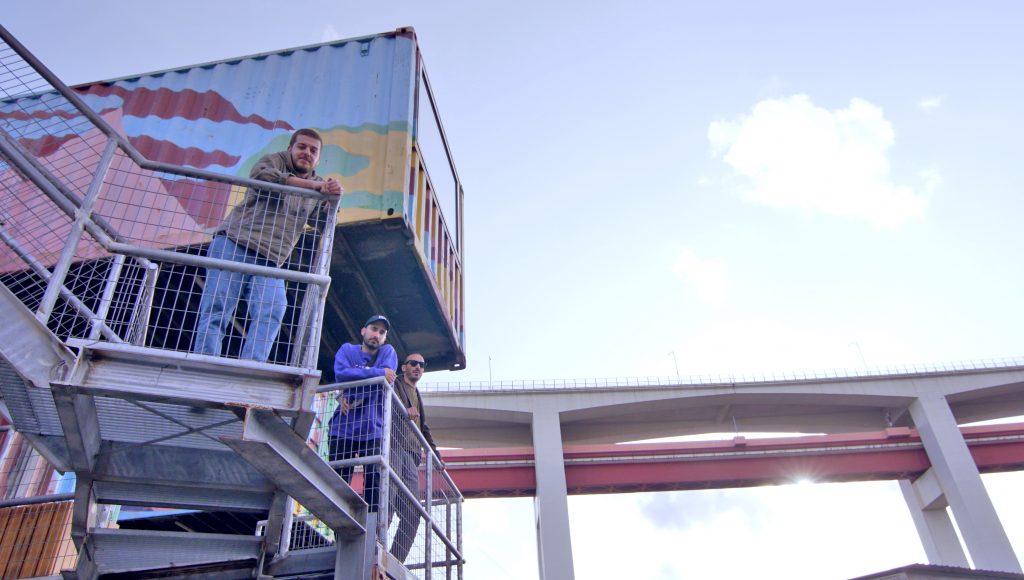
João Frederico, Diogo Vasconcelos and Hugo Vinagre from Discos Extendes by Sbrugens Nyrens
João, Sebastião and Gonçalo have been friends since they can remember, and from an early age they started to develop together a taste in music, leading them to create Extended when they were 18 and 19 years old — “we’ll always be those kids”, they say, but now belonging to a precocious wave of electronic music indie labels. The editorial line, they say, is «eclectic and is about the freedom we give the artists. People show us things and we release what we like”. And Diogo laughs, remembering an interview in English where Gonçalo dropped a “We don’t put the finger”. The first laugh was out there, but Hugo interrupts it by saying “I’m ok with someone telling me things about my music. It really depends on the people”.
People: as many projects, releases, images and communication as they send out, it’s always people who’re behind the creations — giving them a whole other human dimension to these passionate projects. “We do this to keep who we love around. To work with who we feel comfortable with. ER/DE are platforms for that”, defines João. And if we’re speaking of people, let’s speak of those who, after all, make Extended/Extendes: from the editors to promotors and artists. Three people that share common ideas, but different ages and life stages: João is in his twenties, Diogo in his thirties and Hugo in his forties. They’re all working in music, though with distinct perspectives.
João studied arts and then illustration, which he ended up quitting because he felt he was giving more time to music, whether as melomaniac, DJ or co-founder at Extended, a label he created with friends whom he shared the decks with. “And then Nuno (Vil) invited me to be part of Warface, and recognition came creeping in”. But what would happen next would also be connected to the graphic element of it, like the branding for Segmenta or post-Nicolai Sarbid Extended, who was the label’s designer until João took control over it and started enjoying graphic design even more. And because of one passion came another, which now takes up as much time as the other: “My life now is design and music, and I do what I love”.
A career perspective Diogo has been hoping for, while he arrives at his thirties where one evaluates the path so far and plans for what’s ahead. And his was more traditional in the sense that he tried to live out of what he studied: born in Guimarães, he went studying architecture in Coimbra, after which he went back to work in it for three years. He was already spinning records, but, once again, it were the people changing his course, and probably on those dance floors. In this case, Gonçalo, who he met in Braga. They immediately hit it off, so he started to be part of Extended and Segmenta, up until he moved to Lisbon and finally got into the circuit, namely at A Capela, Lounge and then Lux. “I tried to live the so-called ‘serious life’, but it didn’t work. At a certain time of my life, I wanted to dedicate fully to music”. And he confesses that now the idea is to do it to keep with DJing and mainly showcase things: “as a DJ, you’re a content promotor, but I can’t live without showcasing my own”.
Something that happens to Hugo, but the other way around: “Actually, I wanted to make music, not being a DJ”. That desire was so strong it made the food engineer from Alentejo to quit stable jobs in a hospital or a bank to commit to his passion. “I’m surprised at myself, at how I’m being able to live off of this. There are days when I think about how I’m paying for rent and food. I can’t have kids with what I earn. To live a normal life, I’d have to give up music. That’s why I produce every day. My energy comes from making music that challenges myself and being able to earn money with it”. To Hugo — or Torga, as I’m still calling him, maybe because I’m comparing him to the humanist poet whose pseudonym is extracted from the shrub-like plant that survives only in parched soils (torga means heath) — he needs more than knowing he made the right decision by doing what he loves; he knows that courage it takes is noble, but that doesn’t pay bills. As the poet’s humanism, Hugo seizes the heath’s roots. But the career, as short as his age yet extensive for his years doing this, has proven that the best is yet to come.
Two or three “generations” fighting for a place in the tiny space reserved to those who can live off of music, whether it’s behind the decks, the synthesisers or a record release. They create, produce, edit, release and showcase music. And after that they tell the story, like Diogo’s ‘PISTA’, a magazine dedicated to the dance music culture in Portugal, with testimonials that go from the foundations of the Portuguese clubbing scene until today. The first edition was naturally devoted to the 90s, a time they didn’t experienced on the dance floor, but that, in a way, they followed through with the aesthetics, from the graphics to the genre, be it acid, house or techno. The 90s were “a time when you didn’t have access to music like today”, which gave them, as it did to an entire generation, the chance to be true music diggers, archaeologists, cataloguers, hosts and producers like few others could’ve been in the past.
But one couldn’t look back without looking ahead, too. I asked them where they see themselves in 10 years, if after all music will stay in their lives. They say they will always be connected to it, but aware that DJing or music production might take a back seat. However, they’ve already made a number of decisions and the focus is in achieving them, trying to put all those entrepreneur buzzwords into practice, where everything comes true if you work hard enough. And they’ve surely been working for years, shaking things up in different realms, crossing music with other areas, and trying to create something new, in a career that’s also open to new possibilities, only if it’s within music. And if Diogo, João, Gonçalo and Sebastião (or Diogo, Conhecido João, Terzi and Lieben) are already part of the story PISTA will tell, in 10 years there will be only 10 more years to do it. Like stalks in the verge of blooming, extensions of seeds that have already set up roots a long time ago, these “kids” are already sure things.
But even if Hugo and Diogo, because they’ve got “past lives”, as they say, realise there’s not that much time to live on the edge, this is not a lame story about the hardships of a class. On the contrary, it’s of celebration of who — and really who — wakes up every single day to do what he loves, even if that means growing in scorched soils. And that’s not for everyone.
And I wouldn’t finish this better than João did: “I think in 10 years we’ll keep on doing this for love, like in the beginning. No one’s expecting more without doing what we believe in. Put out the music we love. Playing it and see everybody dancing. And knowing precisely that’s what we want to do”.
Because they know that the story is being written right now* and the way extends onward.
*and now, today, there’s another Village Happy Hours curated by Discos Extendes, “Discos Westendes” with Turista (live) and DJ sets by Conhecido João and Diogo. The party’s happening from 6 PM to 11 PM with free entrance and up to 8 PM with two beers for the price of one.
June 7 — André Santos, Carpet & Snares, Flur, Jorge Caiado, Lisboa, Lisbon is the new Lisbon, Music, Peekaboo Records, Record Stores, Trol2000, village underground
Vinyl Village may be the name of an event setting up DJ sets, a live set and a vinyl market with selections from three of the best record stores in town together, but it’s also the kick-off for this chat. And this chat is as much about record stores as it is about who’s part of them. I spoke with André Santos from Flur, Jorge Caiado from Carpet & Snares and Rodrigo Alves (Trol2000) from Peekaboo about their personal journeys and motivations for surviving the tiny record store circuit in Portugal — and the even tinier branch dedicating totally or partially to electronic music. Jorge Naper (EN version by Soraia Martins)
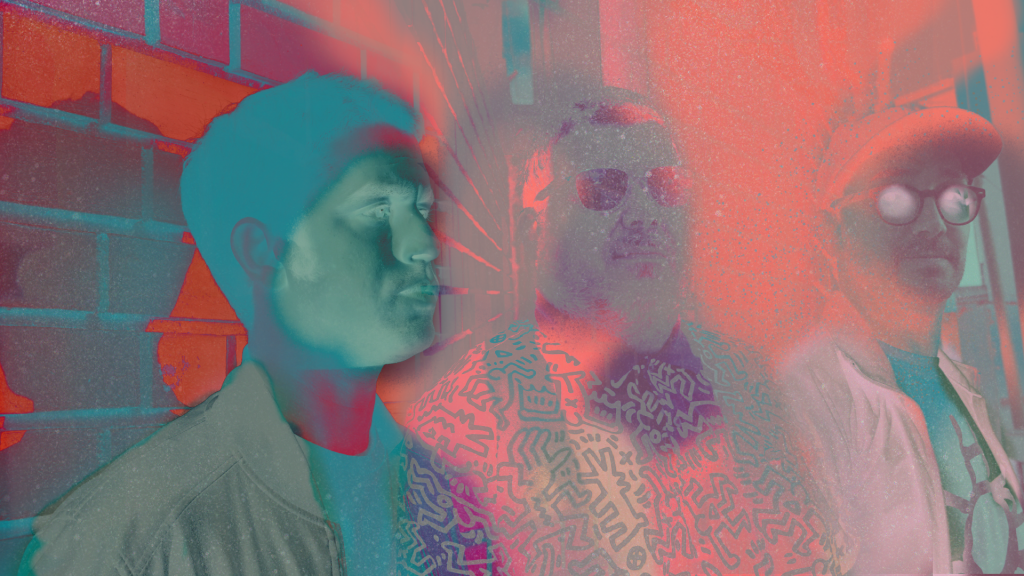
Jorge Caiado (Carpet & Snares Records), Rodrigo Alves Trol2000 (Peekaboo Records), André Santos (Flur Discos) by OneKnown
This could be one more epic story about the revival of vinyl, but it’s not. Mainly because the opinion on the accurate strength of that market is consensual: “I was watching the streaming of the chat (with Percebes, from the last Happy Hours) and I can really relate to what Novo Major (José Moura, co-founder of Flur) said. Vinyl holds a residual value. There was a boom a few years ago, but today, with the access to music being as easy as it is, vinyl became this kind of exclusive object for collectors”, says Rodrigo.
It is indeed not a story about vinyl, because there’s another cross-sectional trait in this series about agitators curating Village Happy Hours: the true love for music, whether it’s in production, mixing, editing or, in this case, curating. But while many of these projects and collectives that keep appearing exist in parallel to full-time jobs that support guilty pleasures, having a store, a rent to pay and an investment in material is essentially that. It’s a life decision made on the fine line in which reason tends to outweigh passion. In which the promise that money brings happiness gives way to safe expectations that life can only be boring until the next vinyl release comes in. And then hoping that it sells.
Before he opened Peekaboo, Rodrigo talked to Márcio Matos from Flur, where he’d been buying records since forever, who told him he wouldn’t make any money and that it was going to be a lot of work. But he did it anyway: “I quit being a designer because I felt I was being taken advantage of. Now I do this because I love it. It doesn’t let me play music as I used to as much, but now I select more where I do”. And Rodrigo, curiously enough, before he was a DJ he’d already been a kind of curator: in Almada, where he spent his youth linked to punk and hardcore, playing on “As Good as Dead” with Hélio Morais (Linda Martino, If Lucy Fell, PAUS), Cláudia Guerreiro (Linda Martini) and Edgar Leito (The Vicious Five), he engaged in a close relationship with music since early on, creating fanzines and collecting tapes and vinyl records from projects in the circuit: “I’d buy demo tapes to the bands and distributed them worldwide, way before there was Internet”.
For André the burden of that personal delight is also outweighing the career he studied for, so both decided to make that passion real. But it’s clear that the journey carries influence: André from Flur — who’s also André from Filho Único — comes from Modern and Contemporary History, which has certainly influenced his role in music, where writing takes its toll. When he was 20 years old, he created the website ‘A Puta da Subjectividade’ with some friends, ‘because we longed for people who would write about music that we dug the same way we enjoyed reading about it”. That is, registering contemporaneity, the experience lived and told, comes from liking to read the other people’s stories. And though he writes for Observador and Sábado, he still feels like his generation in Portugal “couldn’t create something for it, a publication like Fact or Resident Advisor, for example”, and that shows how little evolved the musical culture is here. “The greatest issue here is that you have to create the market. Here you have to work with a lower price than other stores out there or find ways to sell dozens of copies of something that no one knows here”.
And Jorge Caiado agrees, emphasising the door opened by the first place where he went looking for a job when he got to Lisbon, Flur: “It’s one of those rare cases of a store that was able to keep itself standing while respecting an editorial line, because it’s hard to work with niches in a country like ours, where the culture of electronic music is not as rooted as it is in Germany, the UK and Holland, where he holds as much as pop and rock. And that’s reflected on sales in Portugal”.
But Jorge Caiado considers he has lived since early on “a strong culture of dance music in Póvoa do Varzim, which would make the guys get together in garages to listen to records”. At 16 he was already playing at Plastic and at 18 he went to Porto to study Sound Engineering at ESMAE, a time when he started to make his own beats, while his DJ career was getting momentum. He taught at Dance Planet, got together with Marco Briosa’s and João Maria’s Harborage Lisboa, that later originated Carpet & Snares (C&S) with Zé Salvador, and which he now manages by himself. And perhaps that privileged viewpoint of having gone through several perspectives involving music — also RBMA to Groovement to Rádio Oxigénio — he envisioned something more for C&S: “Although the store is the heart of the project, it’s also a label, an agency and a distributor”, turning C&S into an agent for the promotion of electronic music specialized in house and techno in Portugal, on several levels. That same education, visibility, marketing, editing and publishing of music as a whole.
What also ends up happening with Flur, which created Holuzam, which in turn rereleased ‘Belzebu’ by Vítor Rua and Jorge Lima Barreto’s Telectu “that everyone wanted to release”, as André puts it, but in the end Flur got the biggest vote of confidence from its peers. And it’s this reinvention and reach that (also) allows these projects to feed off and evolve from each other. According to André, “the label is one more channel to try and capitalize on what you’re already doing, you reach a bigger number of people, it shows authority”.
It’s that certain ‘authority’ or trust that prevails over choosing records from online catalogues or going to a specialized store. The human, emotional and tailor-made contact with someone with a background linked to music, whom we can trust our taste to. Information exchanges indicating the right path towards finding the next fetish — and as spontaneously as the duration of a conversation. That tip about that record that was missing from the collection that Spotify would never figure out. The belief that art is still just grasped by humans and even studied better by music aficionados.
Because of all this, I’d go to André’s store for the stories, for the enjoyment of talking about music; to Jorge’s for the cultural and aesthetic closeness; to Rodrigo’s for the musical identification and the good-natured vibe. And I couldn’t finish it off better than André did: “We’re not more right or wrong than others, we’re just a little bit cooler than algorithms”.
* this Friday, June 7, at Village Underground Lisboa, from 6 to 11, Village Happy Hours is curated by Carpet & Snares Records, Flur Discos and Peekaboo Records, with DJ sets from Jorge Caiado, Miguel Melo and Trol2000 and a special live of Vítor Rua.
May 30 — Hélder Russo, Ka§par, Lisboa, Lisbon is the new Lisbon, Music, Pedro Caldeirão, Percebes, Sara Sirvoicar, Village Happy Hours
In Portuguese, percebes (often mistranslated as "understands" in portuguese restaurants) are barnacles, the crustacean, but it’s also the name of a music label. They’re both rare delicacies that can be caught: out from the ocean or in record stores. The latter got their hooks in each other, like some kind of supergroup, all coming from different backgrounds, but with music in its core. I cast my net and got a chat with Percebes and its own Hélder Russo, João Silva Pires (a.k.a. Ka§par), Pedro Caldeirão and Sara Sirvoicar at Village. With percebes, of course, and Chefe, their bulldog. I then realized that what drives them together is releasing music, but also the sheer pleasure of talking about the vastness of possibilities around it. Jorge Naper (EN version by Soraia Martins)

Hélder Russo, João Silva Pires (Ka§par), Pedro Caldeirão e Sara Sirvoicar by Sbrugens Nyrens
“I was in Adraga beach and the tide was low, which made me go in a cave and run into a 5-meter wall filled with percebes. I had an epiphany!” This is how Ka§par tells the story of how he felt inspired by a pattern of bona fide “alien claws, like the tourists call them”. And from such casual yet significant encounters, other conversations arose and granted a capital P to that quirky name, and that’s how Percebes came to be.
Then the concept just needed a push. Sara Sirvoicar, designer, is the one behind the graphic communication, which to her has “the typically Portuguese character, albeit making use of a foreign element that hasn’t been much explored. And then there’s the wordplay” (“Percebes” roughly means “to understand” in portuguese). Within a minimal yet rhythmic image, the association with maritime themes is unavoidable, represented by the net of shellfish around the Styrofoam case enveloping the tapes. Unique objects that give value to the content.
But if a fortuitous name and a strong image can allure the most inquisitive individuals, which is essential to the health of a new label, when we eat percebes we are putting our hands on its content, and these Percebes know that it’s all about the tasting experience. At the end of the day, music wins best flavor. And Ka§par doesn’t need any introductions when it comes to electronic music in Portugal. He’s called by his peers “the youngest among veterans”, as he joined the ones shaping Lisbon’s nightlife from a young age. He started producing before he was a DJ and electronic music was fostered in him by Tó Pereira’s (DJ Vibe) show, “Dancefloor” on Antena 3, which was setting fire to Portuguese radio shows in 1994. A couple of years later, when he was 16, Rui Murka invited him to DJ at Frágil and he never stopped since. Lux, Groovement, Red Bull Music Academy, TINK! Music and most recently Suave are just some of the places and projects he’s been through. But here I’ll try to focus on João Silva Pires from Percebes, the agitator, the enthusiast. It’s easy to see he’s wearing his heart on his sleeve when he talks about music, which is something quite standard for those who live with passion for what they do. Percebes, as João says, “is the first project where I finally have total artistic freedom. But what allows us to stand out from the crowd is more about a human side, rather than an aesthetical one. And I also like labels that don’t follow the same kind of aesthetic in every record”.
And it’s exactly that human side around Percebes that maybe enabled them to release a handful of records in just little over one year. It stems from shared desires of getting together to talk about music and its universes, exactly because of that complicity, trust, and mutual admiration. Hélder Russo even declares that Ka§par is a reference from the early days of his electronic exploration: “I wanted to be a hip-hop producer, but I listened to a DJ and asked who was playing: it was Ka§par, and I haven’t stopped following his work ever since”. Until they were put together by chance in the Red Bull Music Academy, when the “idol” recommended the “fan”, and Hélder got to the final shortlist. From then on, they began admiring each other, not only as artists — which brought them together for Gatupreto —, but essentially as people, the human “honesty” that precedes the artistic one, oftentimes set aside in projects where we want to feel a heart instead of a logo.
Even editorially speaking, Pedro Caldeirão says: “the artistic hard core at Percebes is Ka§par and Hélder Russo, and then there’s Sheri Vari, Daino, Early Jacker and 2Jack4U, who more than artists we can relate to are people very similar to us in the way they are in music and in life”. That’s pretty clear even in the way they enjoy creating artistic relationships. For the release of “Epicurismo”, they rented a pool in the middle of nowhere for a “creative weekend”, as they called it, and “where there were more artists than actual audience on the dancefloor”.
There’s the artist and the audience, and then there’s Pedro Caldeirão: he never really took a chance on art, but he also wasn’t fully satisfied by being a mere viewer — Caldeirão always wanted to be hands-on and create those cultural relationships that become personal. And he went from the dancefloor to becoming a creator, from Extended to programming the nights at Mexe, in Bairro Alto, including founding Op \/\/\ Amp, with which he planned events and managed DJs. “My background’s in Economy and Management, but I’d spent more time at (the faculty of) Fine Arts”. Caldeirão was never a fan of the suit-and-tie, 9-to-5 routine, and always looked for cultural and alternative projects. “There’s something in me that makes me sit down, think of a concept, create a project and put it all together… Here we huddled everything together in a caldron and Percebes was born!”.
And then the inevitable conversation about the “new Lisbon” and the label’s standpoint: “Musically speaking, Percebes is as Lisbon-driven as it is dance music, but that has grown with the plurality of Bairro Alto, Frágil, Lux, hip-hop, jazz, soul, funk, house, techno, d’n’b… and obviously the PALOP culture”. One can easily “spot influences in Detroit, Chicago, New York, but also black music and other genres we listen to” in Percebes’ releases, says Ka§par. “We don’t want to make music about what’s expected from Lisbon or what the press tries to sell sometimes about what’s happening here. Records have to be honest, sound authentic”. And what can we expect from a project where each member takes care of his/her own creative process with that desire for authenticity?
Percebes truly stems from one same big heart — the one beating for creation — but with numerous heads. The thing is that the creative waves that crash onto the rocks holding these percebes, take away the experience of many other waves throughout times, the ones that got them to where they are now. And more than a past or a future, Percebes is a safe present for music made in Portugal.
* this Friday, May 31, at Village Underground Lisboa, from 6 to 11, Village Happy Hours is curated by Percebes, that presents “Discos Percebidos” with DJ sets of Sheri Vari and Hélder Russo, and the talk (6pm) “Discos Percebidos: Primeiro Falados e Depois Ouvidos” with Rui Miguel Abreu (Rimas e Batidas) and Joana Esperança Andrade (Rádio Oxigénio), JP Coelho (AMP – The Analog Music Project) and Zé Moura / Novo Major (Príncipe / Holuzam / Flur Discos).
May 23 — cultural agitators, Fungo, Lisboa, Lisbon is the new Lisbon, Marco Guerra, Nicolai Sarbib, Nuno Patrício, Sofia Mestre, Village Happy Hours, village underground
Fungi can be found in just about any habitat you can think of, therefore being the perfect metaphor for a project growing with and for its “hosts”. Fungo’s an association — or an artistic collective or a label or a producer for audiovisual shows or simply a platform for cultural sharing — composed of people who want to create, and who solely depend on it. A group that represents the paradigm of the artist who doesn’t pay the bills with art, but rather relies on creative endeavors to keep on living. And Fungo lives as such: no commercial pretensions but cultural intentions — where artistic creation is in its purest, utterly free state. But as a collective, as art is indeed greater than the artist(s). Jorge Naper (EN version by Soraia Martins)
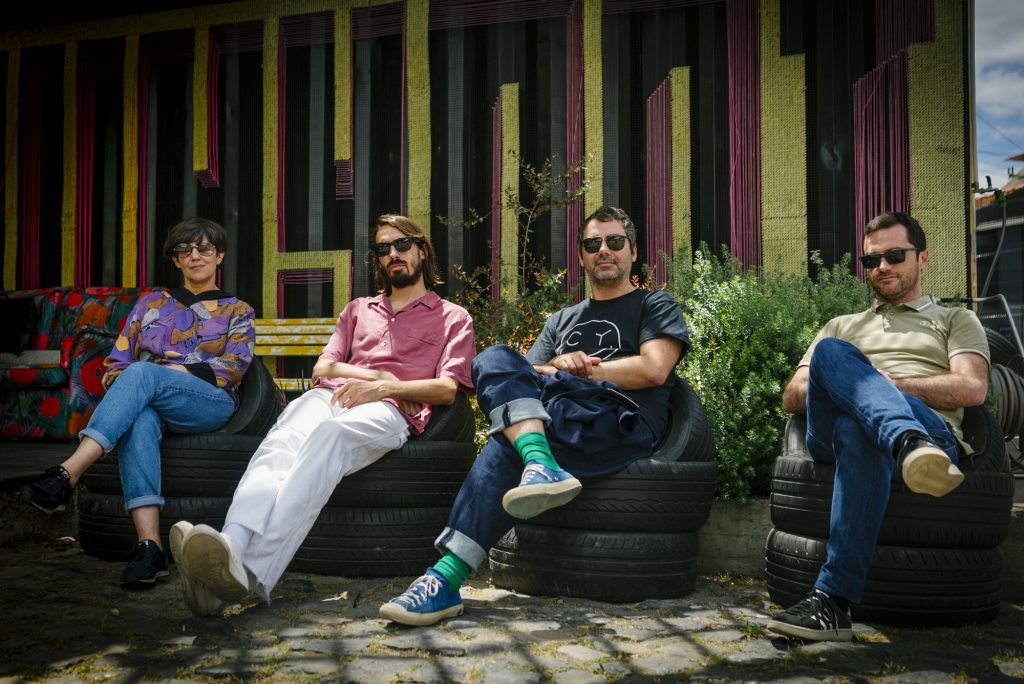
Sofia Mestre, Nicolai Sarbib, Nuno Patrício e Marco Guerra of Fungo by André Dinis Carrilho (@princeofcombro)
Fungo didn’t emerge with that purpose, it just came to be thanks to a bunch of casual happenings in Cartaxo circa 2000 — which is almost 20 years of cultural hustle, really. Marco Guerra (cultural producer and label manager — Citizen:kane, ROSE:BUD, Orson & Welles as producer/DJ), Nuno Patrício (designer and promoter — Just Jaeckin, Orson & Welles as DJ) and Ricardo Quaresma Vieira (photographer — Lumiere Advanced as visual artist) laid the foundations for what later, in 2011, would become the cultural association. Then would come Sónia Câmara (designer and part of the label Labareda — Sonja as DJ), Lígia Resende (director), Lucília Raimundo (actress and dancer), Sofia Mestre (film & advertising colorist — Clothilde as music producer), Nicolai Sarbib (designer and cultural promoter — CVLT as DJ), Lucas Gutierrez (visual artist living in Berlin), José Diogo (Hobo & The Birds as producer) and Caroline Vezian (design and illustration). And many were the partnerships, collaborations and releases with artists — so, so many that I might as well list them below**.
I chatted with Marco, Nuno, Nicolai and Sofia before Village Happy Hours* curated by them. Four members with such divergent work schedules, it was almost an unlikely achievement nowadays to get them all together in one place for this, which says a lot about what we can expect from Fungo. A group of people in which everyone take up with responsibility and pride the idea of what they represent. A kind of pride, I might add, they don’t see as commercial success — more than a full house, a fulfilled soul, the ultimate joy for pure creation and active participation in the cultural scene. You can clearly see this when we’re chatting, the way their eyes shine when talking about their artistic path and the enthusiasm that’s so clear-cut on the stories about what they’ve been doing.
Stories of creative processes, like the couple José and Sofia, or Hobo & The Birds and Clothilde, where he builds the machines and she produces sound with them, the perfect example of the art/life relationship of the collective. Stories that range from organizing illegal raves in the middle of the river, in Valada (“where you could only get into the party when it was high tide and leave on low tide”, as Marco recalls) to when they won a DGArtes contest and produced “Regressar Leva Sempre Muito Tempo”, a play based on Samuel Beckett’s ‘The Unnamable’, for which everyone contributed in some way. The members of the collective move about in different areas and look for others where they can express themselves or find new collaborations. This happens when they invite visual artists to show their take on the covers of the label’s releases with complete freedom to create: “There are no limits. Carla Filipe, for example, typed on one hundred different cassette tapes, creating unique pieces”. And it’s with the same amount of enthusiasm they search for and discover new hidden treasures (like Kinbotte, who they met recently on SoundCloud) and showcase them on their events, the ‘Locomotivas’. Fungo’s just the way it is, the fusion of creative and artistic métiers that give way to something greater than the artist — it’s the art in itself, the outcome of many passions intertwined in collaborations.
“Everyone has a background shared by a certain cultural, aesthetic and artistic momentum, where art and music live together, but it’s mostly a transdisciplinary group”, Nicolai sums up, followed by affirmative nods from the rest of the team. In fact, “transdisciplinary” was probably the word that was uttered the most during our chat, as well as “freedom”. Freedom to do whatever they want, yet always respecting each one’s artistic universes: “Things happen organically, without any big planning, we let it flow”, Nuno adds. There’s honesty in all of them. Fungo, as they say, is nothing but “contamination”, a collective ravished by restlessness that can only be soothed by what drives them — and “what drives us is artistic production”, Sofia concludes.
More than a handful of old friends, which eases up complicities, this is a fungus that spreads out to new ones that come in as a result of artistic contacts, around a table set with music and art where one creates and speaks about creation. This is how I started to figure out Fungo and its players on all of those times when I was privileged enough to hang out with members of this collective, like the celebration of the label’s three-year anniversary with live acts and an exhibition in a private apartment: the walls in the hall had illustrations displayed; the bathroom had the tapes laid out; in the living room, a bunch of wires and machines set up for the live acts; and in the kitchen was of course beer, wine and conversations about music, art and culture. And in my spirit, first and foremost, I felt this need to be a part of it, by pure infection alone.
Fungo is just that, a contagious conversation that stems from the honest proposals of a collective fascinated by art and DIY ethics, composed by that kind of exciting people we love to invite over, those who join us in artistic thoughts we need to share, those who tell us stories turned into art with the same enthusiasm as those who create them. Fungi really taint everything and with them we feel at home — if our home is a genuine taste for sharing, and if our life gets mixed up with art.
*this friday, May 24, at Village Underground Lisboa, from 6 til 11pm, Village Happy Hours at Village Underground Lisboa is curated by Fungo, that presents “Mood: bored \” with a live act of TROPIC NOIR, DJ sets of CVLT and Just Jaeckin, and performance “Dança para Pelés” with Lucília Raimundo + Elisabet Reia, and visuals of Lumiére Advanced.
**Fungo colaborated with musical artists such as Dlian (US), Tatusru Arai (JP), Pantom Love (DE), Dr. Nojoke (DE), Hiroaki Oba (JP), Lump (FI), Popdell’arte, Farwarmth, Pantera, Afonso Macedo, Yari, Ppueblo, Coclea, Papaya, Tiago Sousa, Jibóia, Norberto Lobo, Balla, Octa Push, Rui Vargas, Dexter, Random Gods, MMNO + Polido, The Cage Cabarrett, Travassos + André Gonçalves, Boris Chimp, Acid Acid, Phantasma, 2Jack4U and visual artists such as Carla Filipe, Teresa Fernandes, Rita RA, Maria Vidigal, Raquete Coletivo, Kalu, João Rolaça and Sebastião Pinto
May 16 — Bernando Batalha Torres, cultural agitators, indiefrente, Joana Krämer Horta, Lisboa, Lisbon is the new Lisbon, village underground
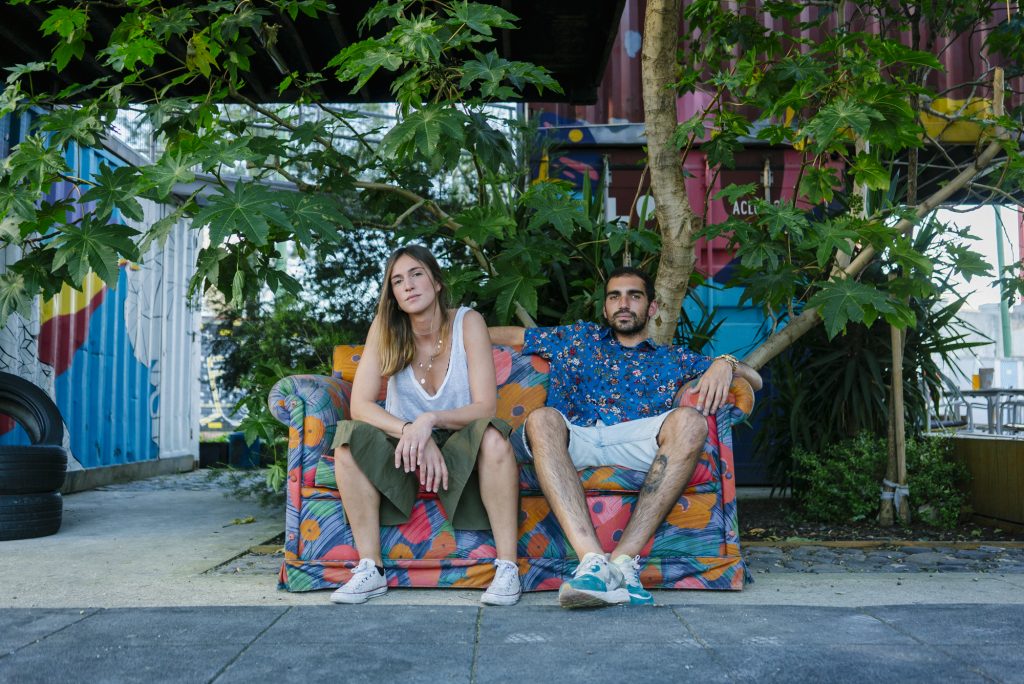
Joana Krämer Horta e Bernardo Batalha Torres by André Dinis Carrilho (@prince of combro)
Music, dance, friendship. We need more of that — and more events that mix it all together. This one says it doesn’t have a logo, but it’s indiefrente. But it’s not indifferent, let alone a stranger to Lisbon’s cultural growth over the last few years — it actually proves “Lisbon is the new Lisbon”. It’s not the new Berlin or anything else, it’s Lisbon and a worldly-wise conscience that has carved out more sceneries and moments to find itself. The vibration that followed is the full responsibility of cultural movers and shakers, promotors, and producers, which, along with the artists, have made Lisbon a pulsating place to be.
I’ve known Joana for a couple of years now, and I’ve always kept track of her enthusiasm for the world of music and performative arts. Perhaps because she grew up on the shadow of a great artist — her father is the renowned dancer and choreographer Rui Horta —, it’s not that unusual that the drive to create something and be successful in the realm of all things culture and performance runs in her blood. From her own experience living in Barcelona, she ruminated on the idea of creating more events at sunset, something not as common in Lisbon back then. And Topo, in Martim Moniz, was where the adventure started. At the time, I remember seeing Joana showing up at Lounge a lot more often to check out the DJs she wanted to summon. Now she tells me: “at first, I was booking all kinds of DJs, from indie to house or even techno, but then I realized that what I needed wasn’t a genre, but a certain kind of music for those final hours of sun; happier music”. And it was right here, or when her aesthetic sensitivity got sharper, I think, that the first secret for indiefrente dwelt on: knowing how to position an event that starts when the light is still out, bringing that positive feel in, as opposed to a darker, more decadent side the night represents. indiefrente is light, clean, with a great vibe, and a symbol of Lisbon’s ever-growing cosmopolitan trait, where there are hardly any moments when we’re not dancing. And that’s a good thing.
After Topo, Joana wanted to reach other mountaintops, so Quiosque do Bambu’s invitation led her to define the next secret, even when things we’re happening: indiefrente was to become a traveling party that would give its audience the pleasure of finding out where the next unforeseen dancing spot would be. Clube Ferroviário, CCB’s Olive Tree Garden, A Janela da Voz do Operário, Le Consulat… And more and more people kept going, wherever the party was, like the swarm of people at Torel in May 2018.
Joana already worked with artists like Kruella D’Enfer or Bárbara Alves for the artwork or Gustavo Rodrigues, Jorge Nascimento or João Descalço for photography or video, and it was thanks to cultural partnerships, at the opening of Temps D’Images, in the centuries-old Edifício Amparo, that the awareness of the transition to maturity took on a distinctive form. In addition to the collaborations with artists and cultural partners, indiefrente got to a place where it needed to expand its team, and it was actually from the dancefloor of all those parties that Bernardo Batalha Torres and João Figueiredo jumped in. Santiago Alquimista came after that, along with Suspenso, a partnership with MIL, and Santa Clara Market — to make things clear, at this moment, indiefrente was wooing over more than 800 people per event on average, a result of these structural changes. Right now, indiefrente manages all sides of the event, from line-up to staff. And that giant step for quality control happened because of João and Bernardo.
Bernardo displays as much that gentleman pose, that courteous demeanor bursting at the seams with confidence and serenity, as that youthful smile of someone who lives with the constant desire to interact with new worlds and experiences. After studying Marketing and Hotel Management, at 23 he opened Matateu with the Manzarra brothers, an innovative modern petisqueira, before the boom of similar businesses that came after. But it was the discovery of alternative sounds and the magical spaces where he went dancing to it that made him fall in love even more for music, for that scene: “in my mind, people can be or do different things on the dancefloor, but the uncovering of new mindsets is what really drives me. More than loving the artists or their value, I’m interested in their integrity, freedom and values, and learning something from it”.
This is potentially indiefrente’s third secret: trying to learn it and implementing it, of understanding how to relate to it. It’s made of people who are mutually inquisitive, hungry for new things, who learn as they go. And there’s something they can teach already, as they’ve been bringing a lot of people together without jeopardizing quality or losing their own identity. With Joana in charge of communication and line-up, Bernardo in production, marketing and public relations, and João in the finance department, indiefrente furnishes its structure with experts to be the best in all areas. And that seems utterly honest to me. It allows us to trust in a good moment. It’s that feeling of trust they’re seeking, I think; of creating a healthy ecosystem guided by a plant-god of sorts: a palm tree, which went from aesthetics to symbol, a metaphor for the concepts that keep indiefrente in one piece: a state of happiness, exoticism, ecology, the plant that can trigger off and grow in all kind of soils. Every time we look at palm trees, all imposing, we’ll remember that we cannot feel unaffected by a dancefloor. Here is where we dance and talk about it. And just like Joana, Bernardo and João, it’s where we can meet people, figure out values, piece ideas together and spread the seeds for the ecosystems of — our — life that need more happy hours.
* this Friday, May 17, at Village Underground Lisboa, from 6 PM to 11 PM, Village Happy Hours is curated by indiefrente, introducing “Palm Tree Affairs” with DJ sets from Benjamim and Pedro Ramos and live art by vjtor. And palm trees, of course.
May 14 — Branko, Enchufada, Lisboa, Music, V Anos XX Pessoas, village underground, VULX5
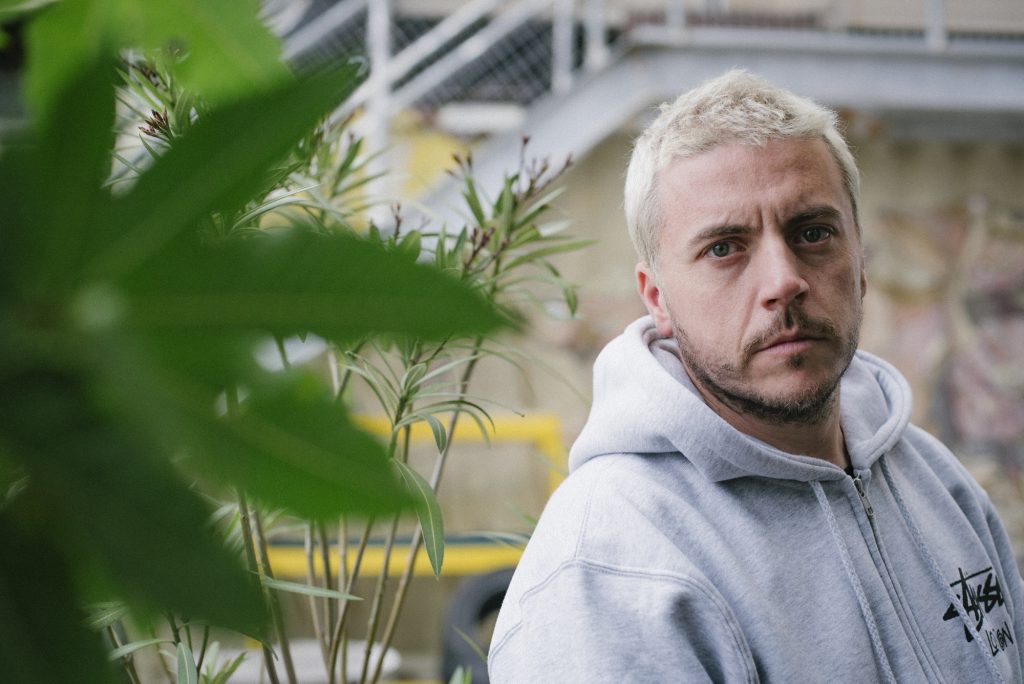
Branko by André Dinis Carrilho (@princeofcombro)
Let’s talk about lasting, noble relationships, safe havens. That kind of relationships that start with the search for a temporary working space and evolve into a second home. Let’s talk about a magical village that welcomes (its) people with open arms, fiercely, and gives them the freedom to do everything. Branko, or João Barbosa, is a DJ and producer, and perhaps these names are not enough to amass his many sides, but that’s how he introduces himself. Success came in 2006 when he cofounded Buraka Som Sistema, with which he traveled the world and learned a lot.
With Buraka there was also Enchufada, the band’s “home base”, as he says, a label and booking agency. “I’ve always been divided into, on one hand, sitting inside the studio making music and, on the other, doing the normal office work and sending e-mails”. This seemingly innocuous duplicity carries a subliminal significance: one doesn’t survive without the other and opens enough space to let ideas flow with more honesty.
When Village opened its doors in Lisbon and Enchufada got one of the containers, a new, unique event came to be, called Global Village Live, which were basically live streams that every week would bring a different artist to share his/her music with the whole world. Inaugurating this was a special party with the release of Rastronaut’s EP — another member of Enchufada — and an afternoon with barbecue, beer and music, the holy trinity of every shindig. It’s important to Branko that the idea of “global electronic music”, as he thinks about it a platform of connection with the world. Village ended up being the ultimate place for him to explore the possibilities of a container in its many different ways, fueled by Mariana herself, an ever creative constant. “We’d open the window, switch the camera on and recorded the whole deal. Some of the streams are still online, you can watch them. This is a place that allows us to do that. It has the right feeling and the perfect scenario”, he says.
With a packed schedule, be it with the label or the new album, the second one signed as Branko, ‘Nosso’, he’s miraculously able to share his time between the studio in Campo de Ourique and the container, let alone his gigs spread around the four corners of the globe, where he still gathers admirers from the times he was touring with Buraka, always keeping his eyes peeled for opportunities and challenges that keep popping here and there.
“I think that this relationship is bound to last. It’s the kind of place you think of as the first option for lots of things. It’s an ever-growing space, from the opening of the big warehouse for concerts and other shows to the opening of the new entrance, so it ends up also being a relationship driven by the idea of challenging one another to do exciting things, sometimes it’s Mariana or Gustavo, other times it’s us; there’s this coming and going of ideas, and that’s truly important. Honestly, I’m quite curious to find out what’s happening from now on, now that it’ll be able to have its own identity”.
In the container or sitting at a table outside sipping on a nice after-work drink or inside the MetalBox.pt studio for some much-needed solitude, Branko lives Village as if it were a divergent playground, with his mindset leaned on what’s different and disruptive, because that’s really the only way his music will be new for him and others.
May 13 — Gustavo Rodrigues, Lisboa, Madame Managment, Mariana Duarte Silva, metalbox.pt, V Anos XX Pessoas, village underground, VULX5
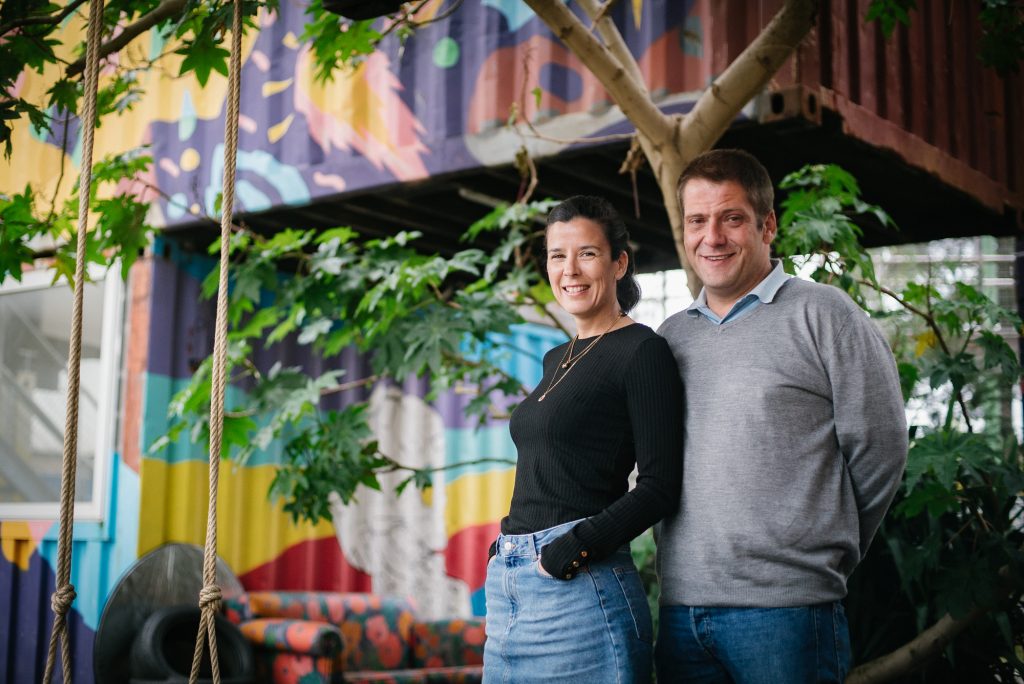
Mariana Duarte Silva e Gustavo Rodrigues by André Dinis Carrilho (@princeofcombro)
Many years ago, certainly more than what brings me here today, Mariana had an opportunity that few get in life, if they don’t know how to interpret the signs, to give rise to an idea and push it further, against all odds, without ever giving up the fight. In 2007, when she was still working in London — in one of those jobs that are so distant in time they’re almost forgotten — she remembers passing by tube carriages stacked up on a warehouse-like building. That vision mesmerized her until it made sense to go in and realize that place was perfect to work on her underground DJs and artists booking project, Madame Management, which she let simmer in this magical place for two years where creatives of many fields and walks of life would gather in a thriving osmosis that she had never seen before. Its name was Village Underground and Mariana was determined to open a similar space in her native Lisbon. Tom Foxcroft, her business partner and founder of the older brother in London, helped her and motivated her in everything he could and soon also became her friend and confidant, probably one of the best side effects of this entire quest.
Fast forward to 2014 and… No, wait a second. Village opened that year, that’s right, but up until then it was all but a bed of roses. The financial crisis, problems, insecurities, questions, doubts — from other people, not Mariana — took their time and overstayed their welcome more than they should, shaping into “nos” against “nos”, until a door eventually opened, and then the real work was about to start. They settled in the Museu da Carris, the containers arrived, the double-decked buses were assembled, the space was set up to welcome the thousands of ideas for events that were bound to happen soon. Residents began arrived little by little, slowly, when the concept of coworking wasn’t as spread as it is today. The containers got a new face from talented street artists and things started looking up with, pardon the commonplace, lots of blood, sweat and tears.
Now that five years have passed, it’s time to celebrate with those who built this enchanted world in the heart of Alcântara, side by side with the Tagus river and the 25 de Abril Bridge, Lisbon’s landmarks that keep pace with the evolution of a round-the-clock effervescent city. “This is a work in progress”, says Mariana, completely aware that Village will never be finished and that there will always be things to do, new people to welcome, events to prepare, news to release. Next to Mariana is her free-for-all in life, Gustavo. Together they’re the power couple of which there’s not much to add — actually, there’s a lot, since their explosion of energy is quite hard to overlook, the way they smile, the love that strings them together in their family and work routines, the awesome vibe of two people who’ve been doing this for so long it almost looks easy, but it’s not. “I’ve got a problem with all my dreams”, Gustavo confesses. “I can dream way too high and think of my next step. Now we’re at a place where Village has become this kind of backyard, an enclosed area with an outdoor space and another for events, plus the new entrance that will change everything”. This is definitely the game changer for Village’s five years of existence. ‘A wall is torn down / a new world rises’ are the verses that define this moment they’re experiencing with the opening of the gate to Avenida da Índia, a new milestone that will give them the independence they’ve been longing for since the first day and that will bring them new challenges and new crowds. “Since the first day we opened, people coming here look at that gate and ask us why it isn’t opened. Then we explain that it belongs to Carris and has been closed for 150 years and the only way to get in is through Rua 1.º de Maio”. No more. “When people internalize this new feature, it will definitely bring many rewards our way. And it will become something normal”. And that’s what will undeniably happen. ‘We peek through the other side / the mind unsettles / The first step to break down the barrier / The fun just got better / Daringly’.
In their minds, however, there’s countless ideas hovering that will be implemented sooner that one would expect. A project like Village doesn’t allow for twiddling one’s thumbs and there’s always something happening, always rumbling in a restless state of transformation. “The next phase will be to build the creative workshops at Village. We, the team, need infrastructures to build a number of things we’ve been wanting to put into place. We’ve got a tiny workshop out here, but we need machinery. In addition to that, we’ve got a couple of proposals from crews that want to join us and make things with us: screenprinting, for one, and plastic recycling. First of all, we want to send a message that focuses on ecology and sustainability. Then, we also want to make our own merch and memorabilia”, Gustavo reveals. Besides the creative workshops, which will include things like carpentry, they will also build a rehearsal room by adding two more containers next to MetalBox, Gustavo’s brainchild. As if this weren’t enough, they are also planning on opening a Music School.
“Things are easier because there’s two of us”, Mariana says. “We share the weight of responsibility”. And it’s because of these two that these five years come as vigorous, full of energy, good music and good vibes as one would wish for, hoping for another ten, fifteen, even twenty springs well lived in Lisbon as a platform for culture and creativity that doesn’t leave anything to chance and is always a step ahead of all of us.
May 10 — graffiti, Illustration, Lisboa, village underground, VULX5, Wasted Rita
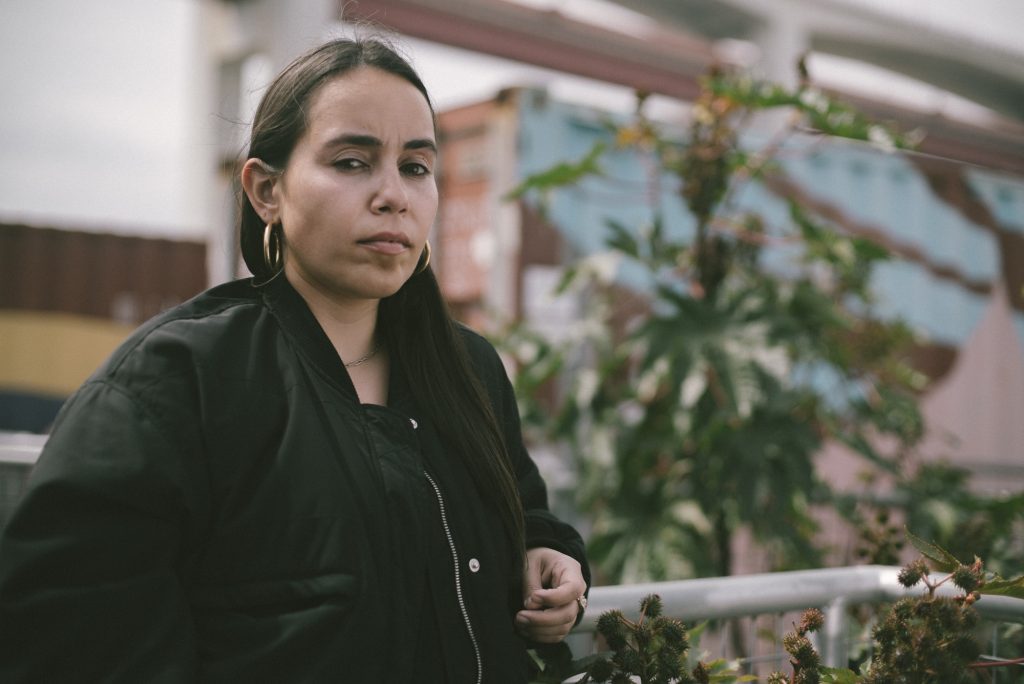
Wasted Rita by André Dinis Carrilho (@princeofcombro)
Rita Gomes was born in Porto 31 years ago and up until about seven years she has lived in Aguas Santas, a parish in Maia, north of Porto, which was enough to create plenty reasons to stay secluded in her art and pour the built-up frustration all over from “living in a small town where nothing happens”.
After college, where she studied Graphic Design — though she never really took it on the road — this identity emerged as an escape, the most foolproof tactic she found to “flush all this frustration out and use my voice in a way that would help me tolerate my existence… Back then, I wasn’t as dramatic as today”. Allow me to go round the drama to emphasize sarcasm, provocation, the rawness in her words, sometimes supported by drawings and vice-versa, that cut through our chests and make us smile in a kind of way that shows that we know honesty is one of her strongest suits, as if this weren’t already the best reason to laugh.
2015 was the turning point, the unexpected catapult that shot her to an explosive success which involved a solo exhibition at Underdogs, ‘Human Beings – God’s Only Mistake’, an invitation from Banksy — that’s right — to display three of her pieces at the ephemeral Dismaland and, last but not least, The Famous Fest gig, which brought her to the village to take up one of the walls with her caustic quotes, ironically painted on in black inside white squares. “I got here not knowing exactly what I was going to do, but my work has always lived off from that, not knowing exactly what to expect or what problems I might come across with and have to solve them as I go. It always end up being something that doesn’t make me nervous, it’s something I accept and that’s part of the result. It may sound easy, but it’s not that easy to be with my eyes wide open to welcoming mistakes and being able to accept that with a clear conscious”.
If there’s visually something about Wasted Rita that takes us to a punk world, half harsh, half bitter, of someone who observes more than she talks and appreciates a state of solitude, to me the secret lies in the intelligence of the words, the nearly poetic articulation of a level-headed yet impulsive insult. Perhaps that’s why her line of work goes so well together with Village, with its almost naked wall, like a scream that doesn’t bother, but itches and makes your head turn. “I’m always a little bit worried that what I write can be slightly aggressive or if I’m going to offend or hurt a minority, but I had total freedom with this wall”, she says.
What matters here is that the dark vision doesn’t comes down to only that: there’s a facetious side of pure fun that Wasted Rita tries to convey in-between false hopes and knives to the heart. From a thought, two or three more come along. A sentence is built, a calling, an eye-opener. Truth hurts, doesn’t it?
May 9 — Buzz Lisboeta, Inês Castel-Branco, Lisboa, V Anos XX Pessoas, village underground
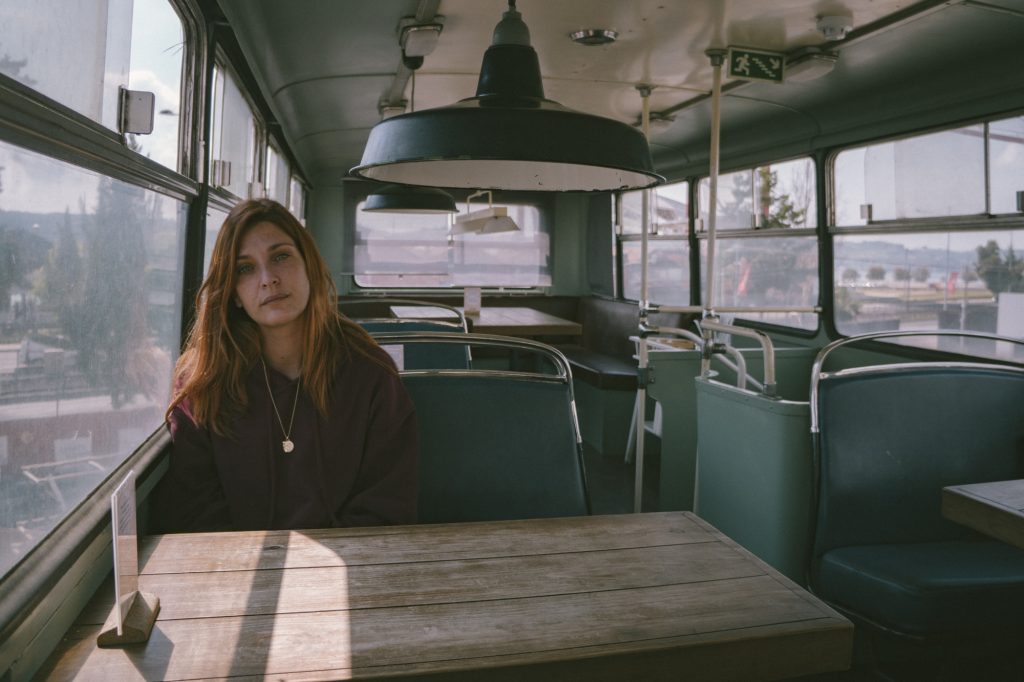
Inês Castel-Branco by Sbrugens
There’s something immeasurably emotional in food, sitting around a table, the conversations that more often than not revolve around what we’re eating next. Food is family, friends, acquaintances, foodies, the simple things in life. That is perhaps why Inês Castel-Branco, actress, a known face from many backdrops, has so astutely become partner at Buzz Lisboeta, but there’s probably not just it, I guess.
A dep, unconditional friendship often leads us to make the most rightful choices and follow the paths that are more adjusted to our dreams. “Mariana and I have been friends for many years. I remember her talking about Village Underground London and being very excited and having this goal of building Village Underground Lisboa. I saw her fight for everything here and then I saw it being born and growing up. I tried to be part of that growth, not only as a consumer and visitor, but I’ve also planned a few events here, and I’ve been following the day-to-day evolution of the space itself and what she can accomplish with it”, she says.
Here it is then, the moment when good food is paired up with good company — the secret to happiness? — and spreads outside Village. Inês’ notable visibility brings Buzz a life that’s different from what we saw before, since, after all, this Buzz has had many names, crazes and shapes during these five years that apparently went by at the speed of light, it seems. I was just here the other day looking at the first restaurant inside a bus on top of a container, which, in turn, has been quite handy in those parties or warm late afternoons thanks to the bar they eventually opened, and now we’re here, holding our glasses, toasting to Village.
Inside, the journey is still magical, fascinating to me, with the bus seats and the old windows and the lamps on the arched ceiling and the wood and all those little details that end up being part of us every time we go up that narrow staircase. This is also where I’m chatting with Inês and realize the idea of this partnership “came up during a conversation with Mariana, who was looking for a person to help her promote Buzz. I offered and she immediately accepted it. And I’m glad she did”.
A number of changes and small improvements were enough to have the tables of this bus-restaurant or restaurant-bus — it really depends on you guys — and the terrace that came along on any given day, and it’s nice when the partner and friend is still “the biggest fan betting everything on a place that welcomes those who’re looking to feed the soul, and the belly as well”.
May 6 — Lisboa, Music, V Anos XX Pessoas, village underground, VULX5
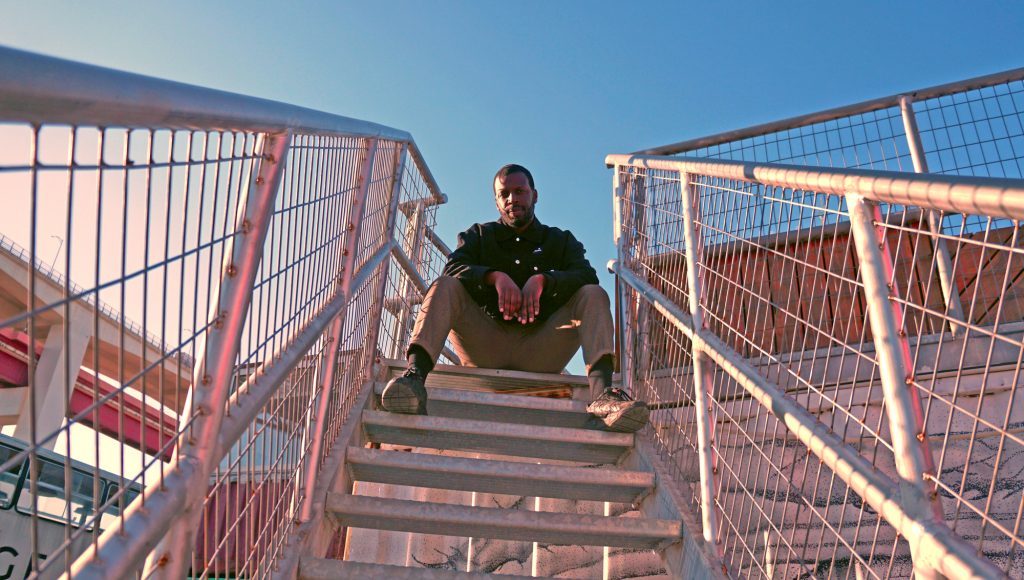
Dino D’Santiago by Sbrugens
Dino D’Santiago, born Claudino Pereira, in 1982, in Quarteira, Algarve, carries in his name the fertility of a legacy of pure family history he didn’t want to leave out of his music: Cape Verde. Emigrants in the 70s, Dino’s parents also brought Creole with them and “spoke Creole to us and we, me and my two brothers, would answer in Portuguese. It was our own dialect and it still is today”, he tells me. But they also brought the devotion that led Dino to be part of the church choir where, to tell you the truth, everything began.
The innocence of a voice nourished by melodies that are suited to those Catholic practices would see an intense transformation with all the “hip hop tapes coming from the US and the UK sent by friends who lived there” in the late 90s, the golden age of sung choruses. The guys already doing this for real used to go to the church to see the kids sing, and that’s how Dino was “chosen” and felt “the bug biting harder”. “Hip hop was important to me because everyone was saying that I had to write my own lyrics, so that’s when I started doing it”.
During the thousand stories he tells me, from the friendship with Virgul, which started somewhere in 2001 and is still alive and well today, up until entering a universe that would forever change his life in many ways, Expensive Soul, of which he was part of for eleven years, Dino didn’t lose his smile, not for a minute, nor even the authenticity that’s part of him as if it were embedded in his skin. These eleven years were pivotal to his musical evolution — a kid from the visual arts with medals and honorable mentions on his back — and to reach a moment of superlative desire to make something in his own name. He got a few members of the Jaguar Band together, the band from Expensive Soul, and invited a number of household names that, one way or the other, were part of his path, like Virgul, Carlão, Valete and Sam The Kid, the latter an important player in his success, as he founded the label Quarto Mágico to release “Eu e os Meus”, Dino’s first solo album.
The track “Mamã” would open the right doors to a strong personal discovery time, as it was written in Creole and dedicated to his mother, of course, leaving a soothing fragrance from Cape Verde in the air that would be fully explored in “Eva”, the record released in 2013 after a trip to Cape Verde with his father. “I went there for the first time in 1987 and came back traumatized. There wasn’t any running water or electricity. It wasn’t for me. After twenty-something years, I went back, and it changed my life. The conversations with my grandparents… It was no longer a child seeing all that, but a grown-up, and I realized they were happy with almost anything — at least that’s what I thought, anything”.
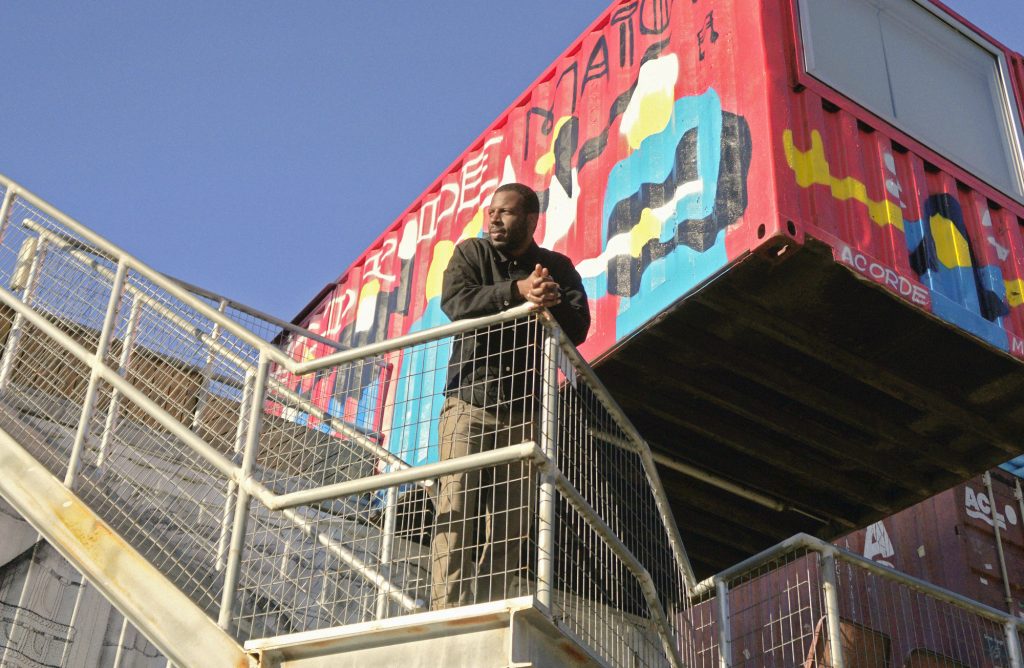
Dino D’Santiago by Sbrugens
Thanks to this record, Dino got to know the world and its many and distant sides, from Seoul to New York City to Belo Horizonte and countless other great cities. But Lisbon has some other kind of rhythm, a different light, which contributed a lot to “Mundu Nôbu”, a graceful fusion of styles and ranges of two flags — even more — perched on an artist that wanted keep funaná close to hip hop. “Kalaf was the first to say I shouldn’t alienate the more urban sounds, because most of the people calling me to sing were not from the traditional, more conservative side of my music. But these, on the other hand, were also by my side, Tito Paris, Bulimundo, all these great names from the Cape Verde scene were embracing me because of what I was writing”.
For this last album, Dino counted on Paul Seiji, a British producer that worked wonders on the Cape Verde sounds that Dino recorded there, and Rusty Santos, a producer from New York who trusted in the slow funaná, “which is my favorite”, he tells me. Carlão also played an important role here, as he was the one pushing Dino to show it to Branko, from Enchufada, and the “Nova Lisboa” happened just like that, with the lyrics and the melody just coming to him, “and then we just had to take care of it”. Two months after the album came out, it was already considered one of the best of the year by Portuguese critics, which took him across borders again and got him a feature in Rolling Stone. This is an album that reveals a new identity that goes beyond barriers and reinvents genres, without forgetting that Lisbon, which for Dino fits perfectly into Village, who he met thanks to DJ Glue, with whom he recorded a track for his “Goodies” EP, right there among the containers where Dino says he feels great at. “It inspires me a lot. The great thing about this is that you see people coming and going, lots of things happening at the same time, which can help you through your creative process. To me, the containers have a lot to do with Cape Verde, which lives off the sea, and there are many containers coming in to help the country and many going. It’s like I’m standing in a harbor in Mindelo but docked in Lisbon. I’m sure I’ll be stopping by for my next album. Everything’s telling me I have to be here, so that’s where I’m staying”.
May 5 — Kruella D'Enfer, Lisboa, Street Art, V Anos XX Pessoas, village underground, VULX5
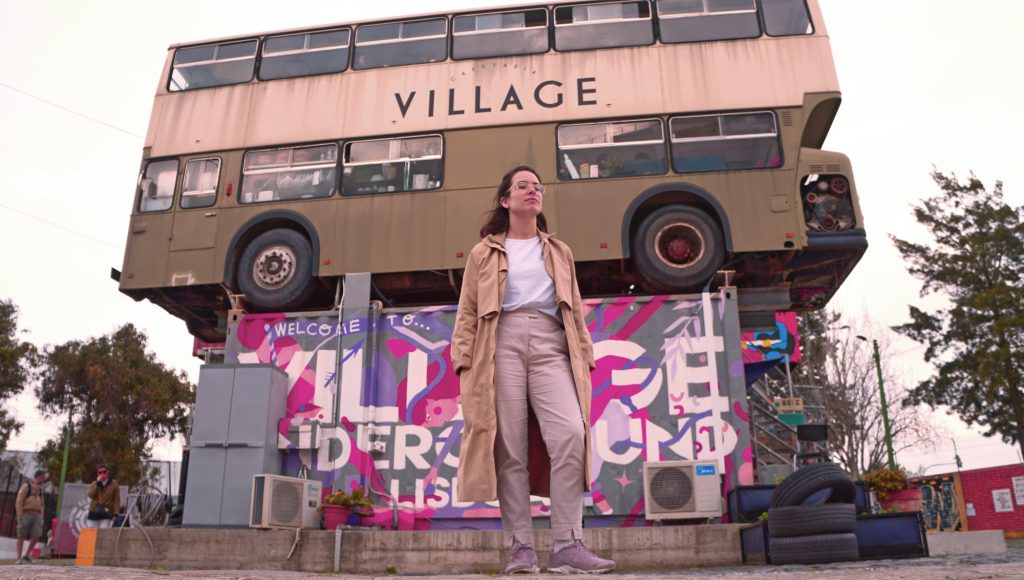
Kruella D’Enfer by Sbrugens
Even at a distance, she makes sure she visits this second home with the frequency desirable to keep her creative sanity well endowed. To Village she gave a message that has lasted through the years, under storms and climate turmoil, but always with that je ne sais quoi that’s so her, that doesn’t fade away or goes away. Colorful twists and turns seem to be a given in this village of containers, a living blend that enriches those who visit and stay — with their mouths wide open, stunned, I’m sure. And one of the first people to spread this visual abundance out was Kruella D’Enfer, Ângela Ferreira’s bold yet magical alter ego.
In a time when Village was given its first steps, Kruella sprung for it and asked to be a part of it, since she was also trying to get ahead with her short career as a visual artist and illustrator. “When Mariana was starting to build Village was when I was looking for some space to work in. Since we already knew each other, I texted her and asked if she’d be interested in filling the containers, in a way that the space was not totally empty, we could even take some photos and promote it. It made all the sense to Village to have movement and see if it was going to work. It was a trial of sorts. I ended up staying almost a year before I moved to Thailand for a handful of months”.
From Kruella’s vast repertoire we can expect enigmatic twists that stand out thanks to the colors, most of the time graced by the presence of singular creatures that have nothing better to do than to welcome us to their universe, which is also what she did at Village: “this started pretty slowly. First it was the giant wall painted by AKACorleone, but there was another container facing another entrance that could use some painting, too, with something that would emphasize the name”, she tells me. And there it goes, WELCOME TO VILLAGE UNDERGROUND LISBOA, a message that perfectly fits into the eclectic soul of the space.
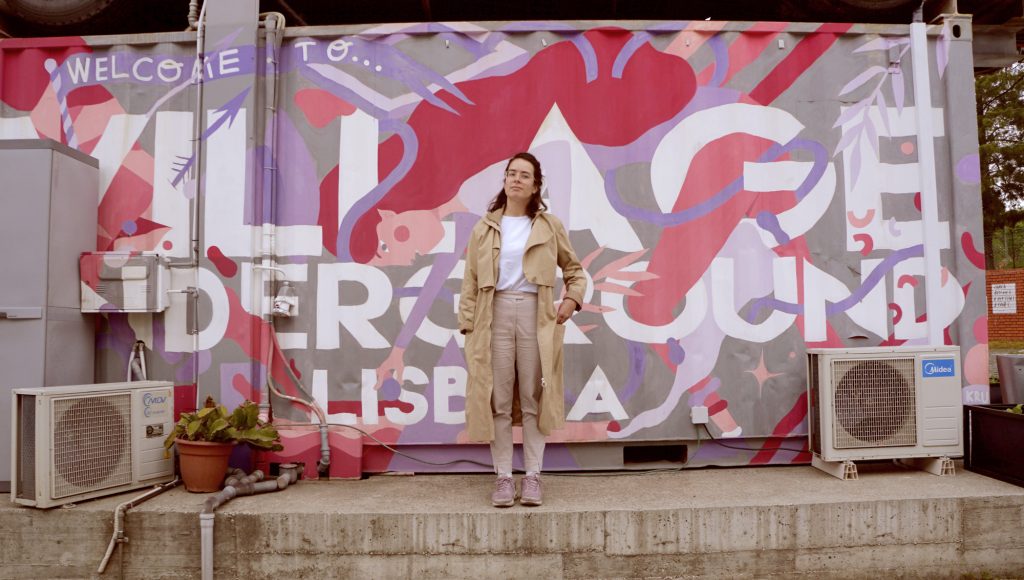
Kruella D’Enfer by Sbrugens
After that, the relationship with Village has been “great” and keeps materializing step by step when the opportunity arises, like the collective exhibition with Halfstudio, in 2016, or the workshop about illustration and street art for students from the Communication Design and Performative Arts degree at ESTAL, in 2017. It’s still utterly invigorating to realize a young talent who virtually started in one of these containers — that have seen a lot of creative customs — can look at younger generations and do something for them without questioning it. Mariana Simão, for example, got her to thank for the appropriate paints for her first wall on one of the containers, something that she wasn’t grasping and that Kruella caught on time. Details from someone who’s been working for quite some time in this field and is not afraid to pass on a word of wisdom.
“There’s always many stories to tell about Village”, she says among smiles. “This was always a place where I’ve been given total freedom and where I can always count on finding people from different fields. I also enjoy coming here when I’m doing interviews because I feel this is essentially a pretty illustrative place of what’s going on in Lisbon. Village is a lot of things, but they all have something to do with what interests me”.
May 3 — Karlon, Lisboa, Música, V Anos XX Pessoas, village underground, VULX5
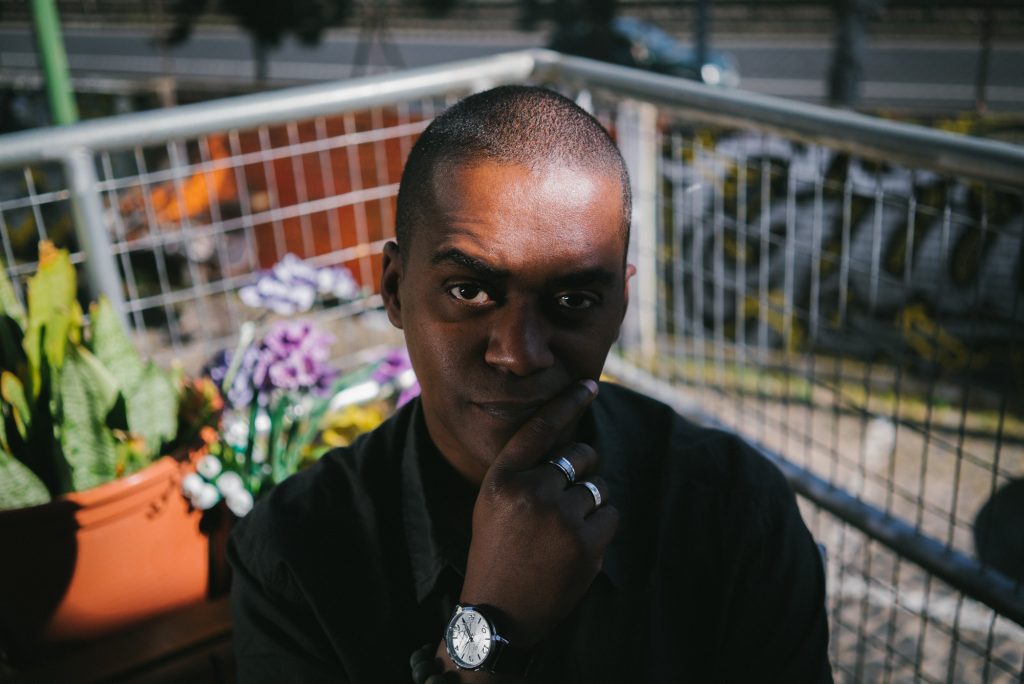
Karlon by André Dinis Carrilho (@princeofcombro)
On one of those days of climatic catatonia, with rain and sun appearing in turns, such a typical sign of our usual spring, Village welcomed us, me and Carlos Furtado, or Karlon Krioulo, or Karlon, and immediately I foresee a fun, pure conversation. Karlon is one of those people that oozes good vibes everywhere he goes and is not afraid to share his colossal heart with those who come close. Music brought him to Village in 2017 because of his album ‘Passaporti’, his homage to a past by affinity he crafted with Cape Verde and the sounds of these exotic, breathtaking islands. “I came her to rap at Village’s third anniversary and I found lots of people hanging out, peacefully, chilling. When it got to my turn, I wanted to psych them up, and the sound was not that good, there were a few issues, but I was going to sing anyway”, he tells me, “all I want is to show my work. We did it and it was super fun. It was intimate because the crowd was pretty close”.
Perhaps the proximity between people and stages ever growing there is Village’s ultimate asset: even though it’s underground, it has this innate ability of making us feel in the center of the world, with all the attention turned to the art of creating and doing things well. “Of all the stages, and I’ve climbed on a lot of them, I enjoyed this the most. I was never fond of that thing where the crowd is miles away. Here I was pretty close, I felt this good energy”, he says.
Although this was not his first contact, after this he kept on nurturing close ties with the unique village, opening doors wide enough that allowed him to be part of Acorde Maior this year as a mentor and central figure to whom kids can look, listen to and learn. Karlon is, without a shadow of a doubt, a storyteller, a dreamer that writes everything down on paper, as “writing is the key to everything”, as he said so himself, therapy, a place he found to empty his head from the more confusing voices. But also discipline and the sense of responsibility play an important role in his routine, something that was swayed by his parents, who are from Cape Verde. Karlon carries around this legacy of education transmitted by this more demanding, work-driven generation. The combination of these two sides of the same man revealed to be perfect for a timely hand-over at Acorde Maior, where he could share knowledge, lyrics, free style, writing, organization — everything he uses and consumes every single day.
In his mind he keeps an idea that goes beyond the four days at Acorde Maior, “a school” with a selected group of kids where they could learn a number of activities. And, he believes, “the perfect place for kids to have music, sound, recycling, sewing, costumes, those things”, he says, “it’s Village”, recalling the times at Chapitô, where he learned about lots of things and felt stimulated like he’d ever felt to leave his comfort zone.
It’s a matter of energy, really, a powerful chemistry that rolls out and expands and swells until it’s covering our skin. And the energy that Karlon receives and gives back in equal measure in this space of thousand colors is unutterable and can’t be regulated. It’s contagious thanks to his gestures, his smile, his laidback “hi” launched at people who knows him and who don’t. Karlon is, deep down, the mirror of the people who are happy here and aren’t afraid to show it and end up coming back and back and back again. “There must be some Portuguese word to describe Village, but I haven’t found it yet”.
May 2 — Cultura, Graça Fonseca, Lisboa, V Anos XX Pessoas, village underground, VULX5

Graça Fonseca by André Dinis Carrilho (@princeofcombro)
I can count on the fingers of one hand the number of times that a project, even before it was born, made so much sense for a city. In a time when Lisbon was still slowly opening itself to a social, cultural and touristic, Village was still on Mariana’s mind in such a passionate turmoil she could barely keep it to herself. It was because of that that Graça Fonseca, currently Minister of Culture, read about it amidst the shadow of a wishlist. “I recall seeing an article on a magazine with new year’s wishes from several people, and among them was Mariana and her wish of seeing Village come to life in Lisboa”, she says.
I’m talking of a time before 2014, pre-Village and all, an all-or-nothing of breakthroughs that were starting to emerge in the city and, step by step, mold it into what it is today — even though it’s not possible to describe with the right words a true cosmopolitan metamorphosis that got ahold of the city, for better or worse. Back then, and still occupying the position of councilwoman of Economy and Innovation the Câmara Municipal de Lisboa (Lisbon City Council), she didn’t know the concept or Mariana, but the realm of new projects and up-and-coming business areas for the city, anchored to entrepreneurship and cultural industries and technology and trade startups, were making up ground.

Graça Fonseca by André Dinis Carrilho (@princeofcombro)
“When I read the article, it seemed absolutely fitting to what we were building here”, she recalls. Perhaps thanks to her nature of evident sincerity and total clarity of what she believes in Graça got ahead of everyone else when it comes to interpreting this place. And perhaps due to it Village had the opportunity of being built right then and there because someone powerful believed and still does in what diversity, multiculturality, social respect and good music could do for a city.
Alcântara was already a go, conversations with Carris had already started and Graça kept her unshakeable support during the times that following Village’s construction, “which had this peculiar appearance. Today, people look at this as if it were part of the city, but, when it opened, it wasn’t like that. People forget easily; Lisbon was something completely different from what it is today”.
We can’t talk about coworking spaces in containers and buses, one of Village’s first flagship concepts, without talking about the “very diversified programming based essentially on music and more” that composes this fascinating, almost mythical place, as Graça refers with the certainty of someone who knows, with all the needed certainties of that moment, that the path Village has been coursing through hits the jackpot in many ways. To her, Village “is definitely a cultural project”. Period. “Everything that happens here in terms of culture ends up having an extraordinary effect on people and its relationship with them, as far as appealing to different generations is concerned, the social impact in projects like Acorde Maior” and everything happens here every single day.
April 30 — AKACorleone, Lisboa, Street Art, V Anos XX Pessoas, village underground, VULX5
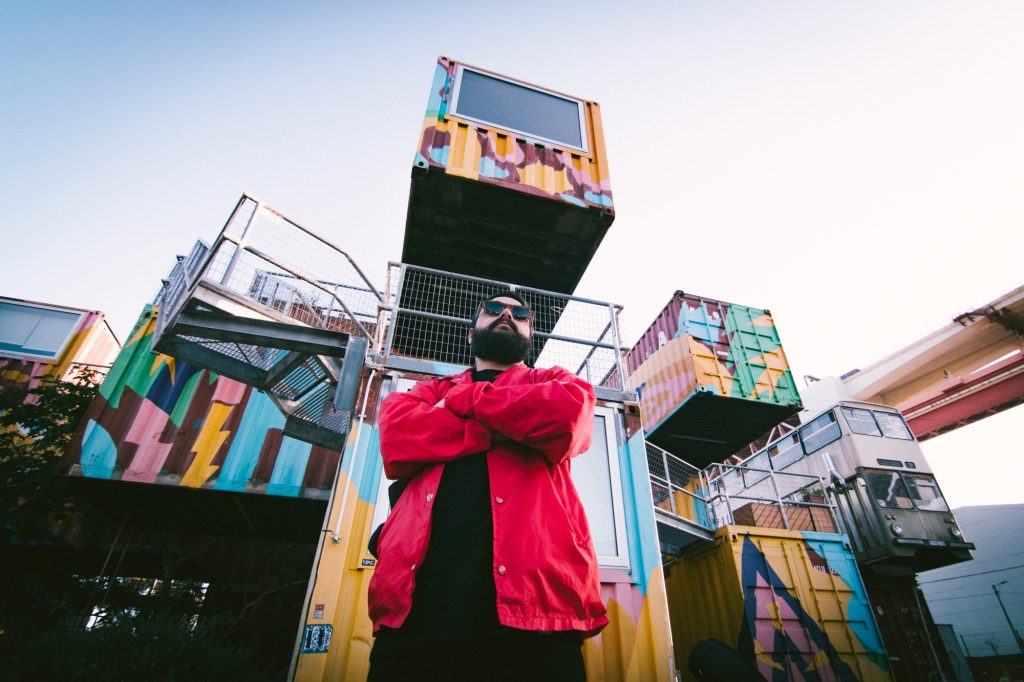
AKACorleone by André Dinis Carrilho (@princeofcombro)
If we’re talking of profound visual impression, Pedro Campiche, or AKACorleone, stands out from the attentive crowd with such a nonchalant attitude that I almost forget, for a moment, that he was the one who painted a big part of Village from top to bottom in its earlier times. It’s still quite impossible to miss out on this project, the several faces of different containers that have resisted to the passage of time and the intervention from other artists who come and go, a blatant sign of the perpetually moving winds of change.
It was in 2014 that AKACorleone climbed on the scaffoldings, undeniable partners of many hours of work painting on a huge scale, and adorned the surfaces of these metallic giants so that a new home could be born here and evolved. “When I had my first exhibition at Underdogs, ‘Find Yourself in Chaos’, I wanted to have a project out of doors and challenged Mariana… In fact, I can’t even remember if she wasn’t the one challenging me. It must’ve been, since I don’t think I’d have that crazy idea of painting the containers right off the bat. I’d probably always need that push. What I made had a lot to do with what I was doing on the exhibition, which was playing with anamorphic perspective and points of view a little bit different from I usually made, and the containers were perfect for this. Village wanted to take a risk; I was the first person who painted this colossal area, and I feel like it ended up helping to create an identity for it. I’m very proud of it”, he tells me.
Before this disruptive village of ours appeared, Mariana already followed Pedro’s work, probably one of the driving motives for this strong bet on his work, which ended up reflecting on such a dead-on outcome. “Mariana was definitely one of the first people to believe in me”, he says. And for good reason.
Seeing Village as a platform for many artists to succeed in different fields is also to get a glimpse of the people who were part of it since the beginning, were gone when they had to be gone and later returned, whichever way. It’s sort of a boomerang effect “where people know they’ll find something a little bit different. When I think of Village and come here, I have the feeling that’s constantly changing for the best, that there’s always something new, a container painted differently by someone I don’t know, and then I research it and I immediately get access to someone that’s just starting”, just like he was when he first got his hands on those containers, forever branded with his inimitable strokes.
A place that keeps on surprising us without us even realizing it, let us just say, thanks to the freedom of expression and speech from those who plan Village’s day to day routine and those who also accept these challenges shaped as walls that inspire and seduce. “Those who know Mariana know how she’s a force of nature who can take care of business and do surreal things. In the beginning, Village was exactly this. There was the Village Underground in London, but it seemed to much complicated to do something like that in Lisbon, but it happened, and now it’s transformed into a cultural hub with concerts, exhibitions, markets. I’ve already seen such different things here I don’t even know. Most of all, there’s a part of Village that’s growing along with the city, always changing, always following its path”. Or perhaps it’s the city that’s following Village’s path
April 29 — Halfstudio, Lettering, Lisboa, Street Art, V Anos XX Pessoas, village underground, VULX5
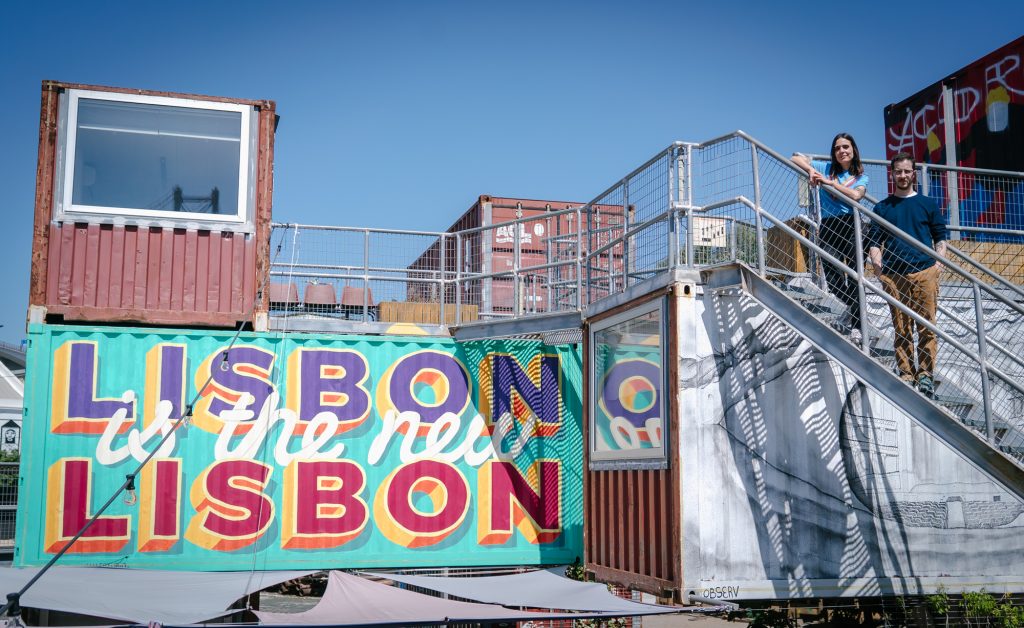
Halfstudio by André Dinis Carrilho (@princeofcombro)
In love and labor, everything goes, particularly when the spoils of peace translate into colorful walls, vivid mirrors of a city that never stops, that renovates itself, and dances around us without losing its most intricate language. For Halfstudio, this oh-so-noble life motto is mostly shown in their lettering and sign painting studio and the most charismatic, on-point message that Village could ever aim for as a welcome mat, LISBON IS THE NEW LISBON, a direct consequence of their hard work and laidback success.
When they met back in 2010, the future was pretty straightforward and got them together immediately. From living together to sharing graphic design projects they usually worked on during their spare time was a clear-cut trip, and soon the name came up. A couple of years later and they bumped into the type of art they’ve been sharing since almost the beginning, in some way: sign painting. “We were fascinated by it and realized we wanted to make something like that, just for kicks and without giving it much thought. We noticed that it had already been something that existed in Portugal, not exactly as an art, but as a service. It’s definitely a stronger culture out there”, Mariana Branco and Emanuel Barreira tell us, almost in unison, this power couple of the visual arts — they won’t acknowledge this, I’m sure —, true aficionados of this tradition that started getting new, more modern approaches through their hands.
After that, the inevitable walls. The first one was in Barcelona, at Galeria Cosmo, in 2015. In the same year, they were invited by experimentadesign to be part of the biennale’s Tangents exhibitions. Mariana’s invitation came later, tiptoeing its way through thanks to Kruella D’Enfer, to grace the façade of one of Village’s containers with that message, the ultimate love letter to an ever-changing Lisbon. “LISBON IS THE NEW LISBON was Village’s maxim. Back then, a number of comparisons to other capital cities were beginning to emerge, so Mariana thought of this so that it would be as unambiguous as it could be that Lisbon could stand on its own”, Emanuel recalls. The process per se was easy, “the execution not so much”, they admit. “They gave us creative freedom and the sketch was almost immediately approved, but the rain that came down on us during those two days before Village’s birthday was a challenge”.
Painting this container coincided with the collective exhibition with Kruella. The scene was set up inside container 13 — which apparently was the same container she’d been during Village’s and her career’s first days. Inside, old painting and unappreciated objects, treasures more or less hidden from the flea market and bric-a-brac places, those kinds of things that can only be seen by those who can really see them, splattered with lyrics and colors from a common musical backdrop. A real-life grandma’s house was born — and she listened to Kendrick Lamar and Black Sabbath in the same afternoon.
This experience brought them more than they expect, “that extra confidence boost we need to be able to go forth on our own, as everything with the container was done that way, from the projection to the preparation of the surface to paint, and we’d never done anything like this”, they say. At this stage, Halfstudio were also looking for a language that didn’t connect them only to the aesthetic of old signs. “Village’s role in this was really important to figure out where to go so we could get the identity we were running after, as we were given freedom to do whatever we wanted. To absorb everything around us also ended up influencing our work”.
The next year, as they were at Festival Iminente in London, a real estate developer from Boston contacted them to recreate the container’s painting with BOSTON IS THE NEW BOSTON. “He had been in Lisbon and seen the wall at Village and thought it made sense, because they were going through the same thing there at the time. Now we just have to turn this into a franchise and conquer the world”, they joke. Is the secret for globalization as we know it the ineffaceable crossing of certain realities onto others, as if it were a poetic copy-paste, without extinguishing what’s truly authentic? I certainly hope so.
April 26 — Ginga Beat, Lisboa, Music, Rui Miguel Abreu, V Anos XX Pessoas, village underground, VULX5
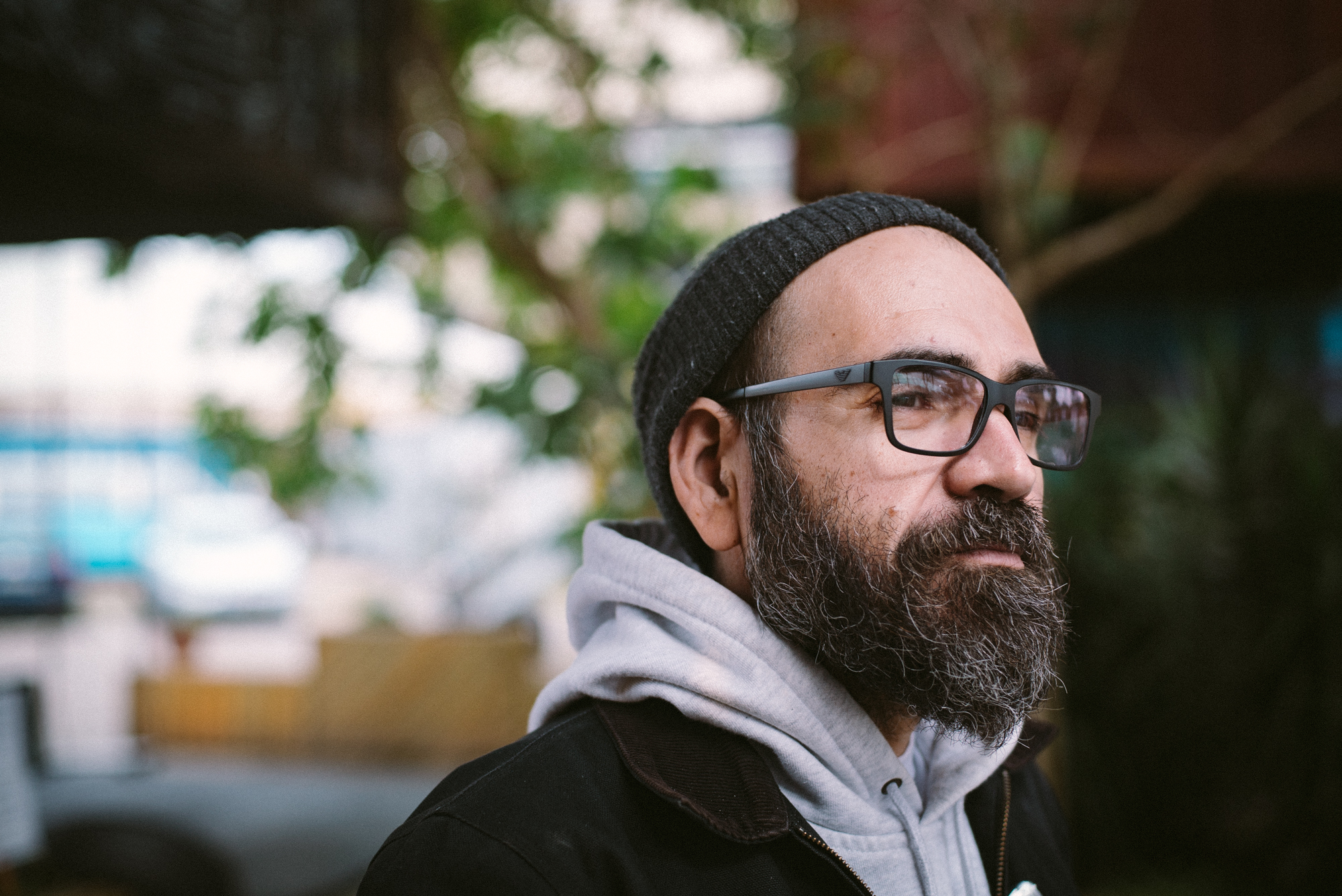
Rui Miguel Abreu by André Dinis Carrilho (@princeofcombro)
From glorification to physical matter there’s a long way that, when traveled, brings us the satisfaction of a day well-spent, of a beat placed right where it should, of paper and pen in his hand for another musical remark. Rui Miguel Abreu’s entire life has been revolving around music, from critic to writing years on end, from the days on the Ginga Beat radio and Rimas e Batidas to the scattered moments as a DJ. Among so many layers, our Village emerges as assertive measurer of happiness, as stated by Rui himself: “I feel great there; the atmosphere is just mesmerizing”.
Let’s go back a few years to the jumping-off point of this admiration and get to Village Underground London, the older brother, if you will. This is where Rui and Mariana’s path crossed owing to a story about Portuguese people working in music in London. Back then, Mariana proudly wielded her outstanding alter ego, Madame Management, a career management and event planning project leaning towards the electronic and underground scene — a legacy she flawlessly fit into Village since day one up until today.
Rui remembers those days all too well, the return from London, Village opening its doors, the overnight transformation this venue asserted in Lisbon. And he goes on: “as I was saying before, it was immediately clear that Mariana had been able to successfully bring all the amazing vibes you felt at Village Underground London here. That rather particular energy spreads like wildfire here because there’s a lot of people crossing paths”, he says.
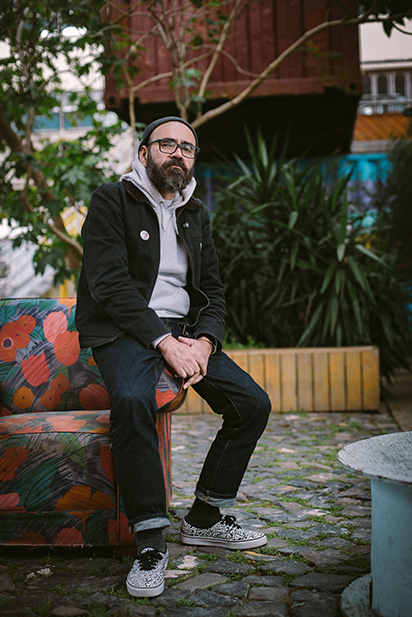
Rui Miguel Abreu by André Dinis Carrilho (@princeofcombro)
He started by recording Ginga Beat, a Red Bull Radio project, in MetalBox, the studio ran by Gustavo, the other half of Village, but other plans and professional goals kept coming up, even if at its own pace, and made this place a regular event on his calendar. Chatting with Rui was enough to grasp that Rui’s music-loving knowledge and the way he gave himself to it are not a joke or a measly sideline, but rather a synoptic table of what he did and does. Amid these achievements is Alcântara Toca Discos, an event that happened in 2016 at Village that was put together along with Alcântara’s Parish Council, curated by Rimas e Batidas, meaning it was thought out to allow people to enjoy music in a variety of ways for two days, like with “a small vinyl records market, a gig at the Santo Amaro’s Chapel performed by Surma, an evening dedicated to hip hop with Keso, Blasph and a few DJs from Monster Jinx, right there under the containers”. As Rui says, records and music, right under the containers, under the indelible light shone by Village’s most unwavering message, LISBON IS THE NEW LISBON, painted by Halfstudio on the container that still turns heads the most.
Let’s throw the role of noble teacher in, of Music History at ETIC, no less, which has already taken him to Village with his students so they could meet the place and MetalBox. This is, I gather, the proper way to show younger generations that the future belongs to those who dare and take a risk, with plenty of sweat and tears, but always with the heart facing the in the right direction — this is the only way a place like this can grow, progress, breathe, evolve. “If you’re someplace where you feel creativity hovering, you end up being contaminated by it. It’s easier to let your creative juices flow within a context in which you feel there are other creative minds at work”, he says. “That’s it, that’s why I keep coming over”.
People are the reason Village is still up and running, and people are also the culprits in Rui’s coming back over and over again, starting with Mariana and Gustavo, whom he admits being pretty close to, but also Branko, Glue or Batida. It’s a constant stimulus that you can feel soaring around.
As a person who loves to experience Lisbon, Rui doesn’t shy away from sharing its daily routes with me, which inevitably end up including Village, because it’s “an escape”, he says, that got away from the chaos to create its own universe in another kind of central neighborhood in town. “I’m teaching for most of the year at ETIC, in Santos, and I really relish this route that stretches along the river. When the days start getting warmer — and I do this a lot —, I get out, stop by the National Museum of Ancient Art and walk down to meet someone around here, like my partner at Rimas e Batidas at his studio nearby. I’m always around, for sure. I like to believe we map out our own circuits around the city, but we do exactly because there are places like Village, that is to say places that refuse to fit into the mold, that dare to be different and that end up positively swaying the city. If there’s talk about some kind of special vibe in Lisbon it’s because there are places like Village around”.
April 25 — village people mag
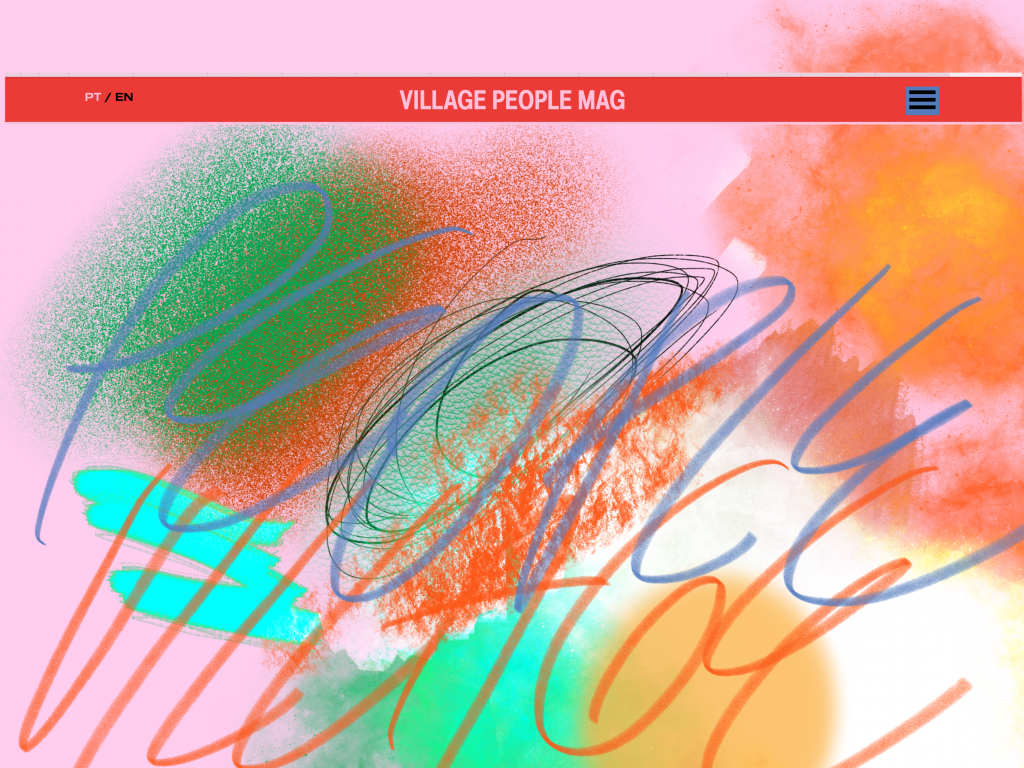
Village People Mag is the Voice of Village People
VPM comes from Village Underground Lisboa (VULX) community, but its voice is independent and made by the voices of everyone that are around VULX universe. We believe in the power of communication, in the importance of knowledge. We believe in the power of art and culture as critics of modern societies. And, most of all, we believe in people, and in cultural agents: the artists, creatives, musicians, DJs, graffites, photographers, videographers — creators and thinkers of all kinds — that define liberty of expression, equality and diversity. People that inspire us.
VPM is a container of intentions, thoughts, ideias and cultural contents. On the liberty day (25th of April, Carnation Revolution day in Portugal), we launch a free magazine. Welcome.